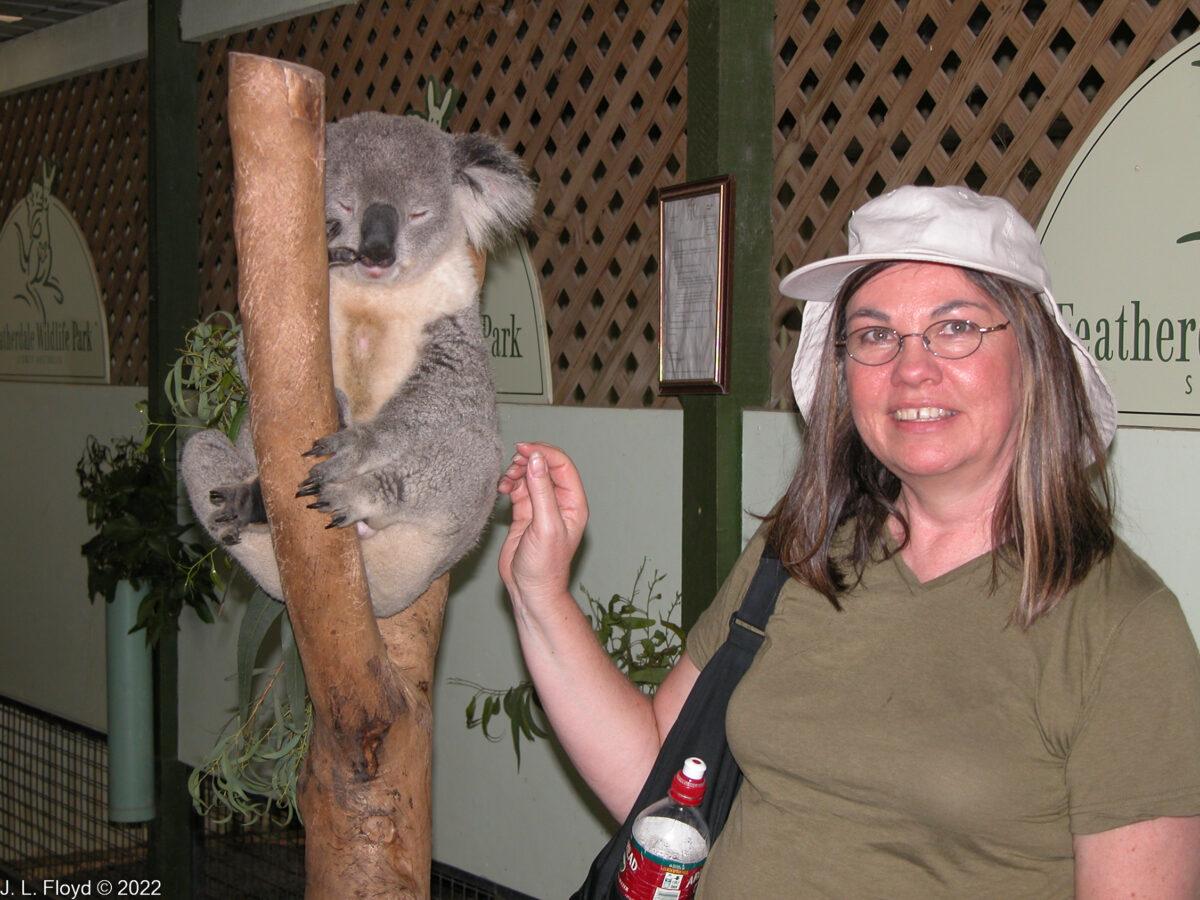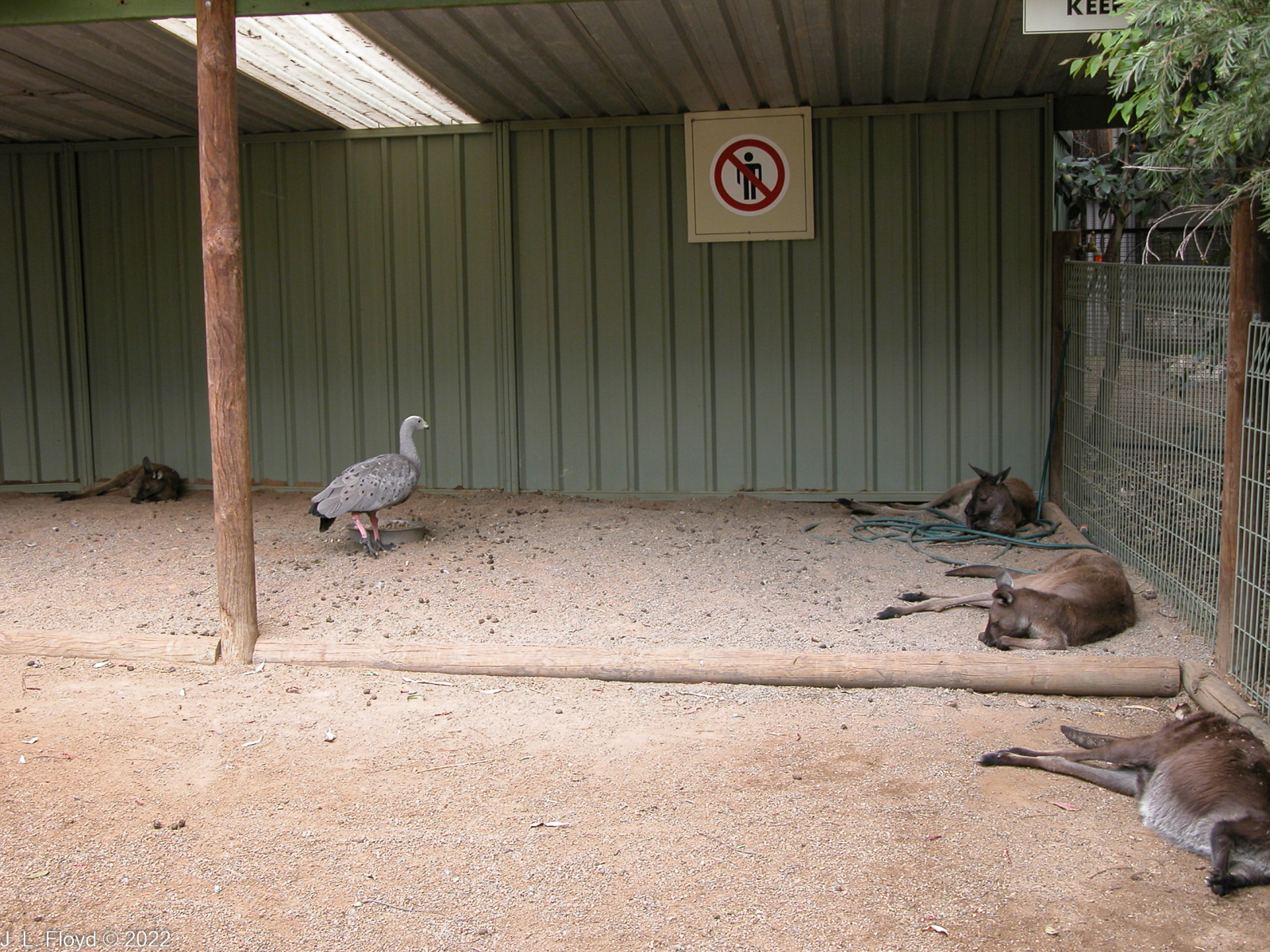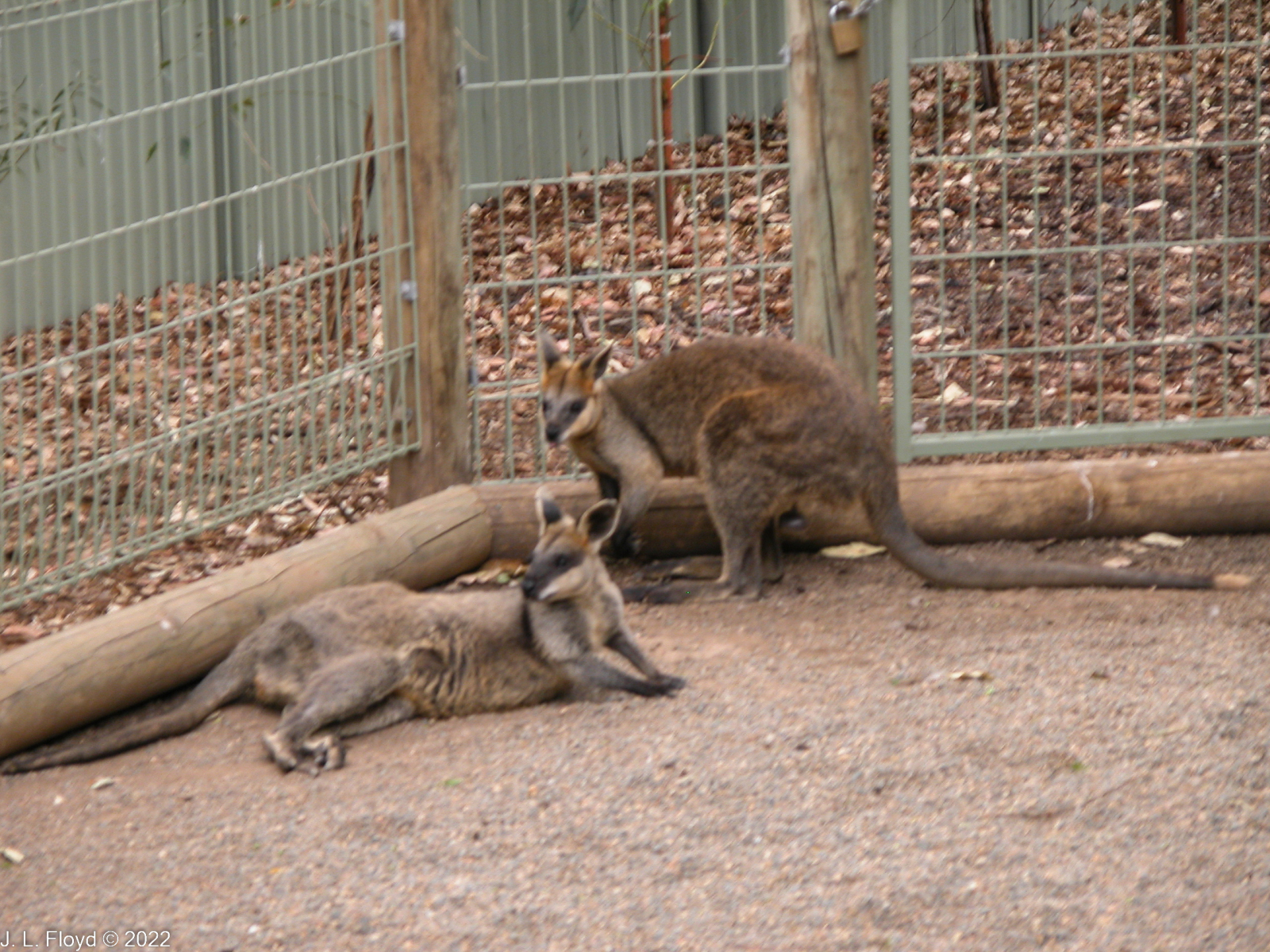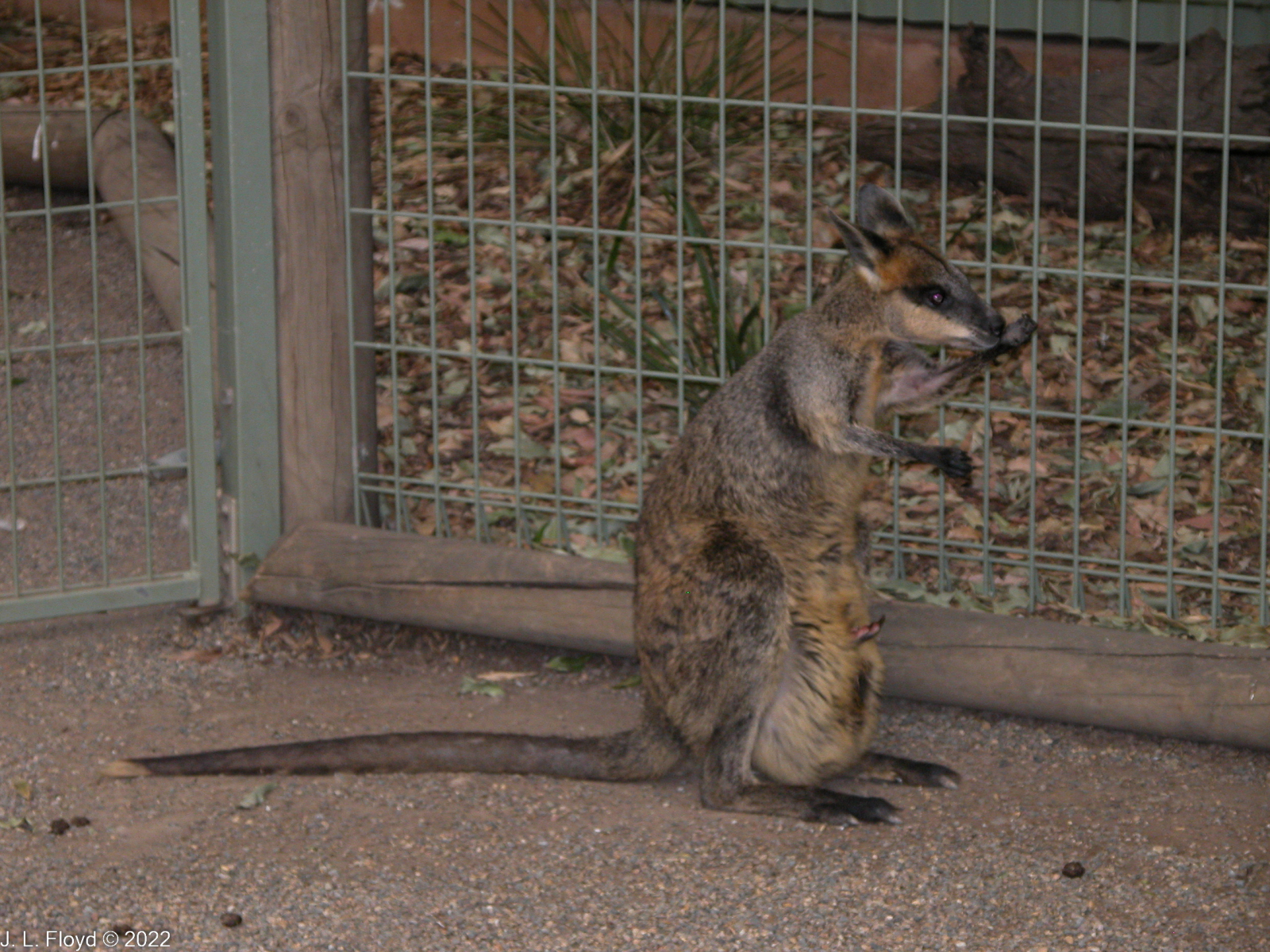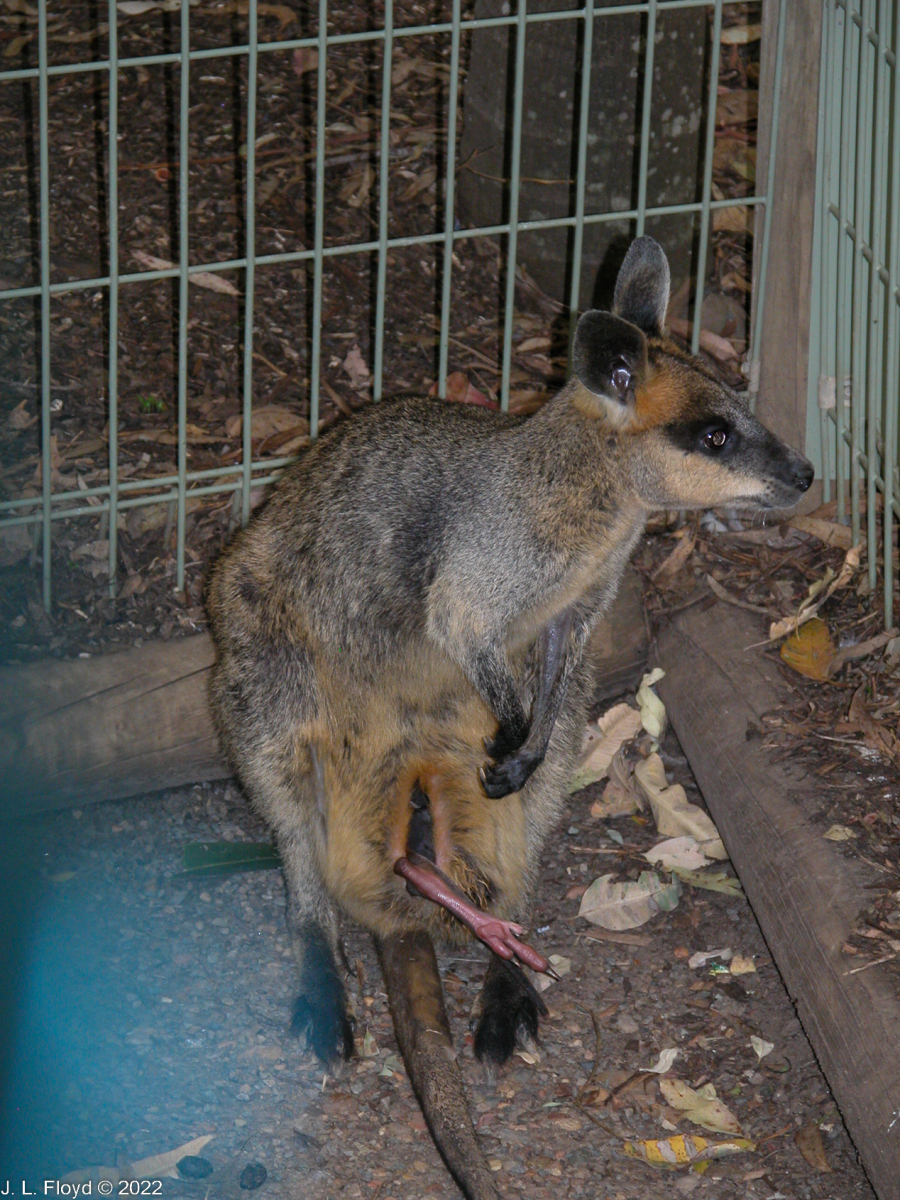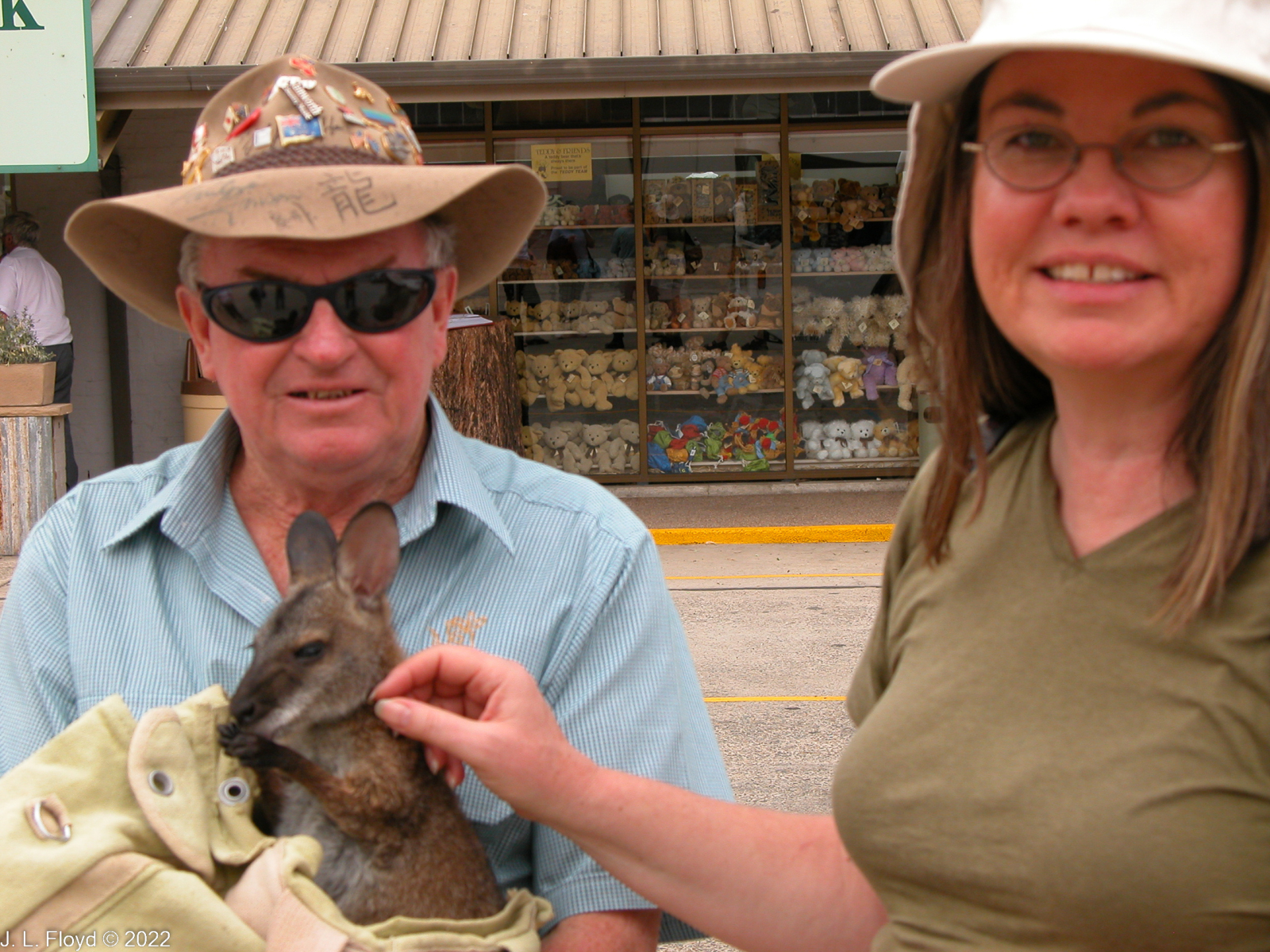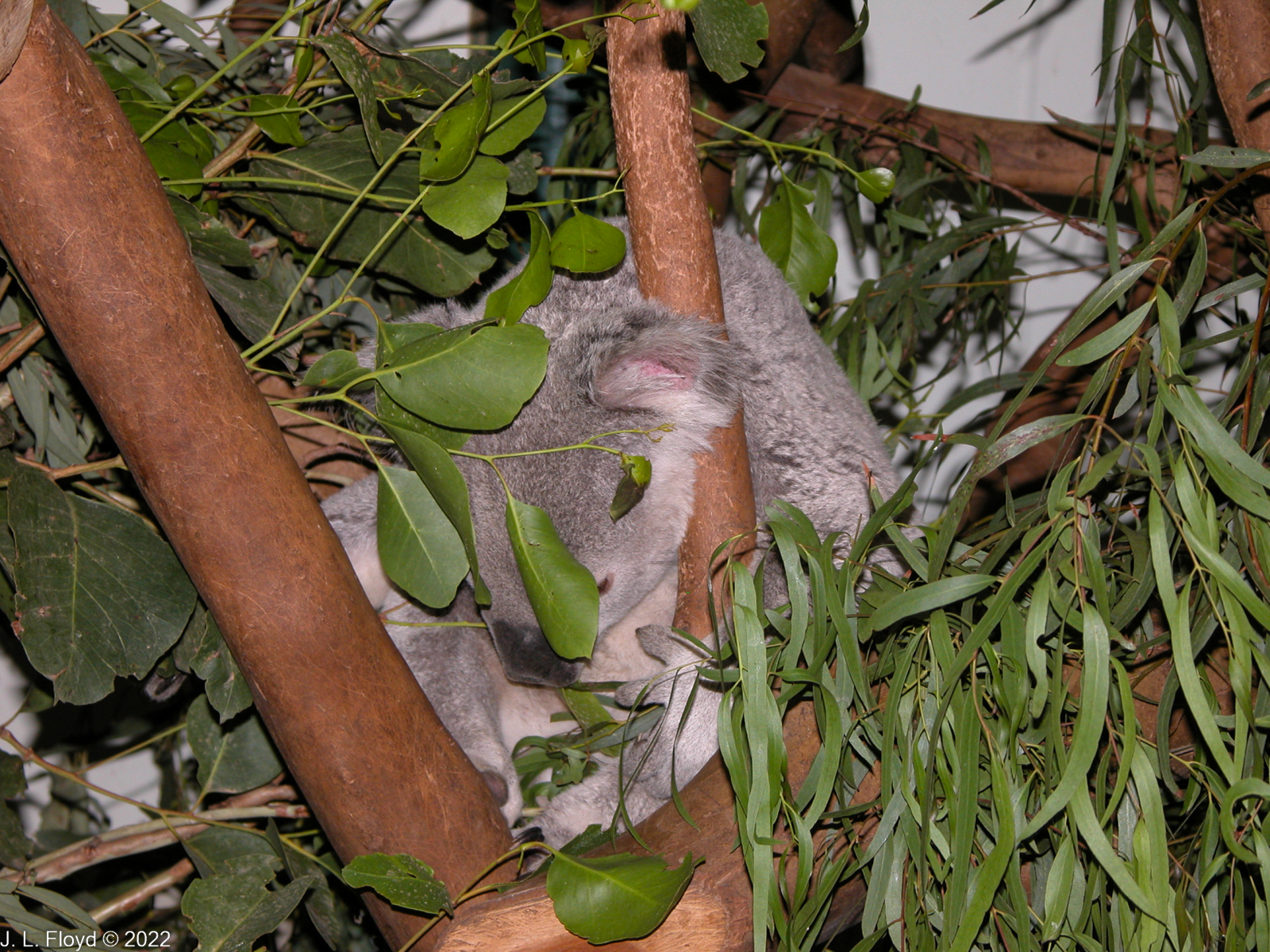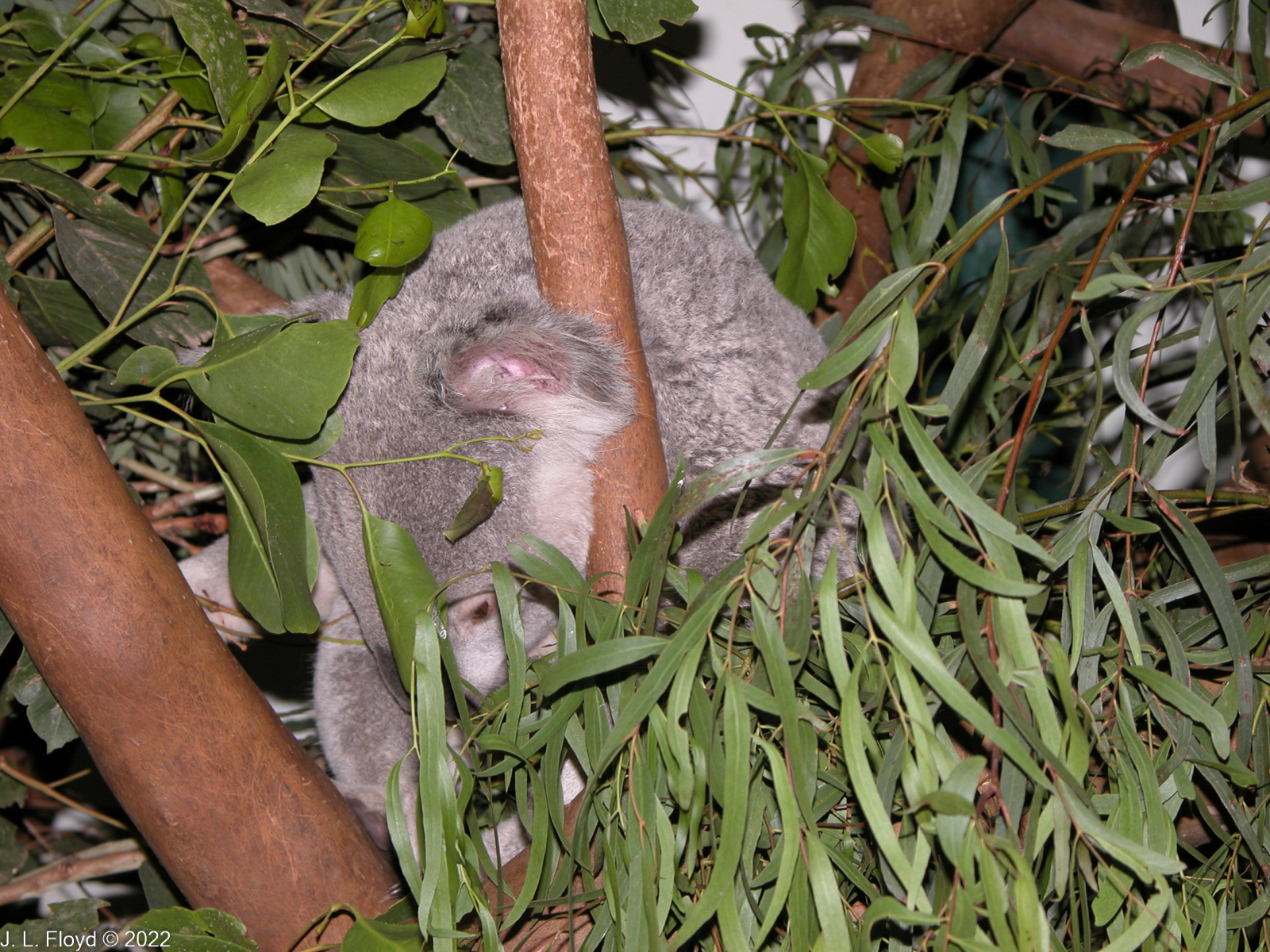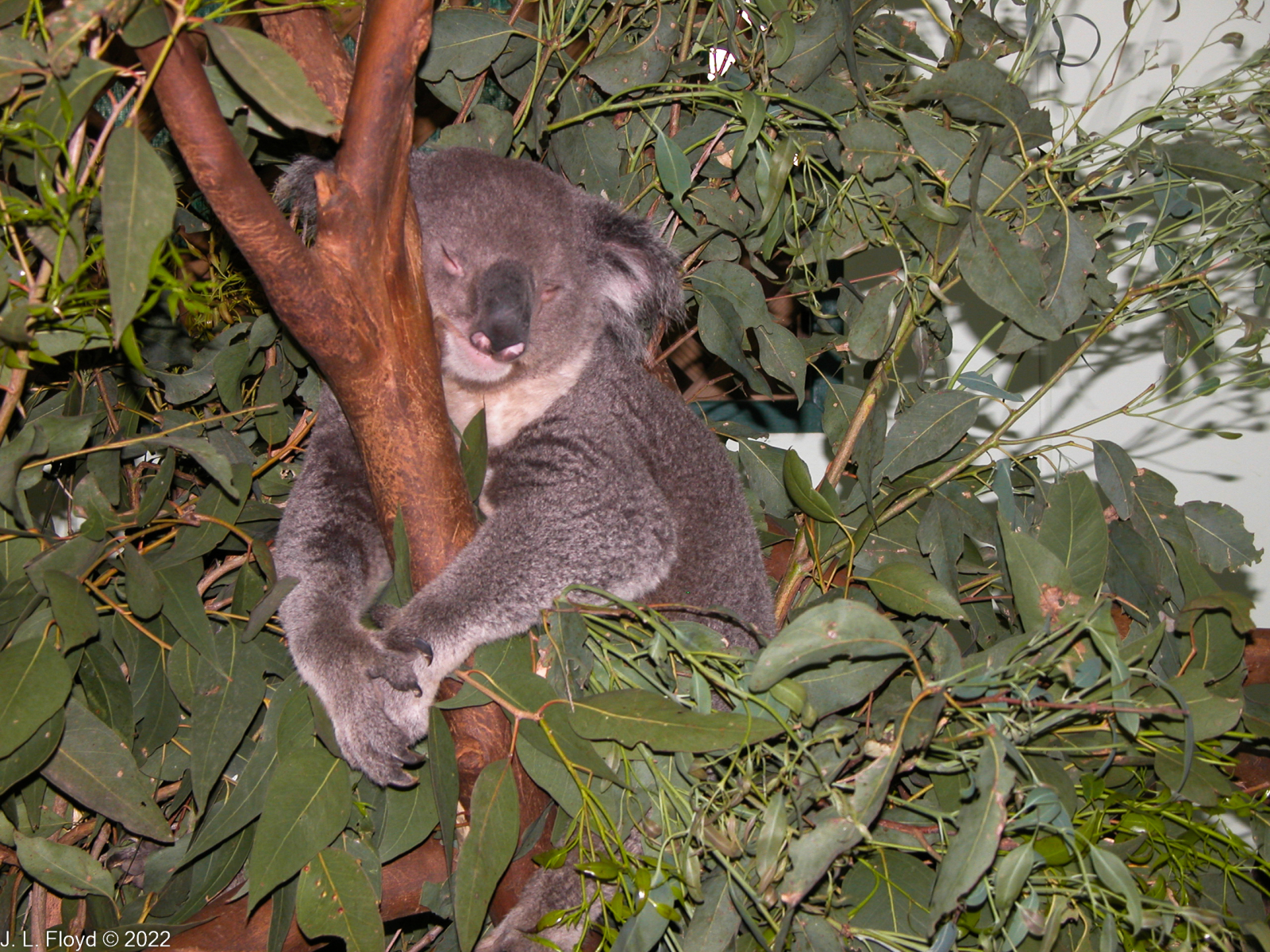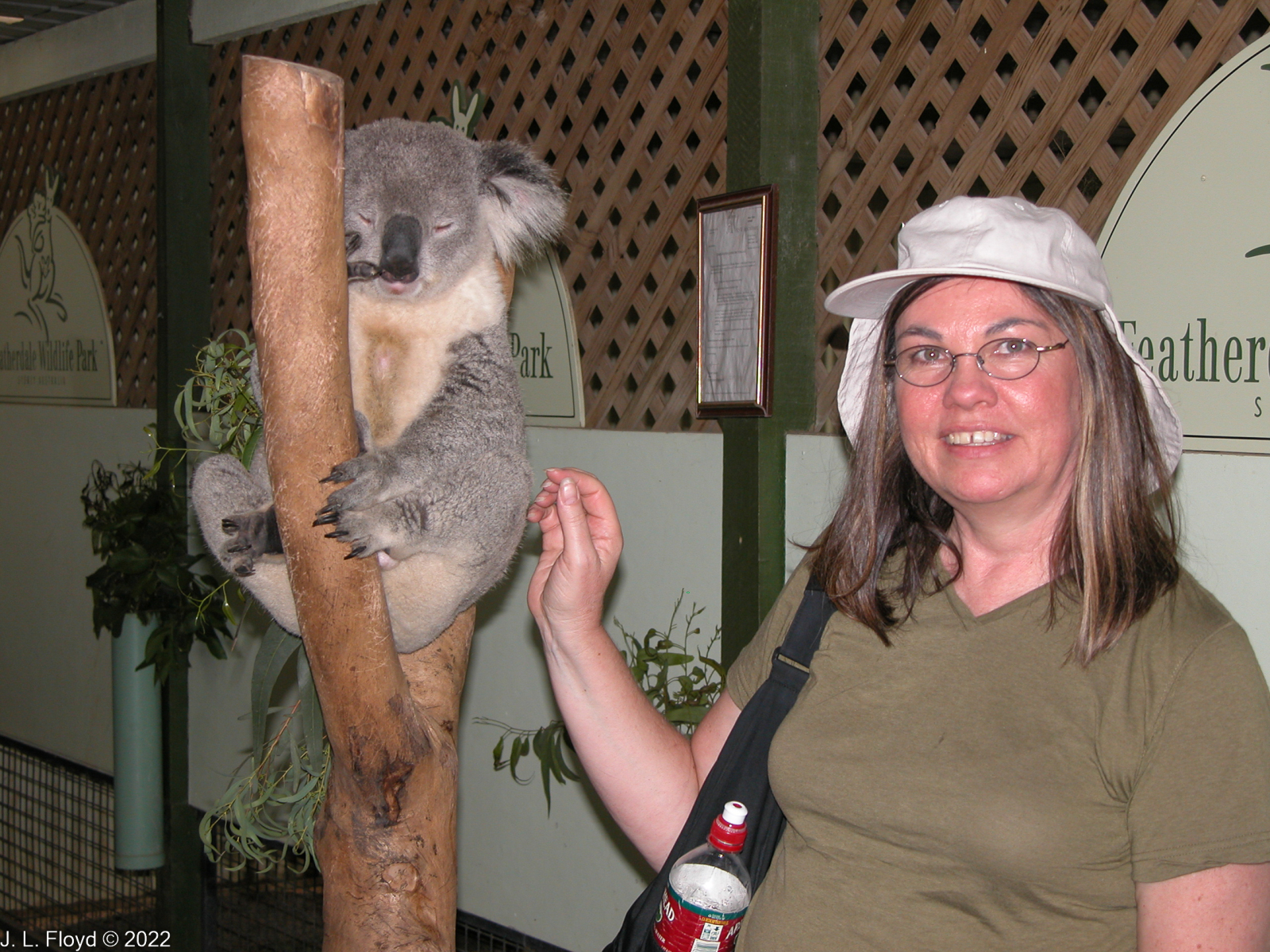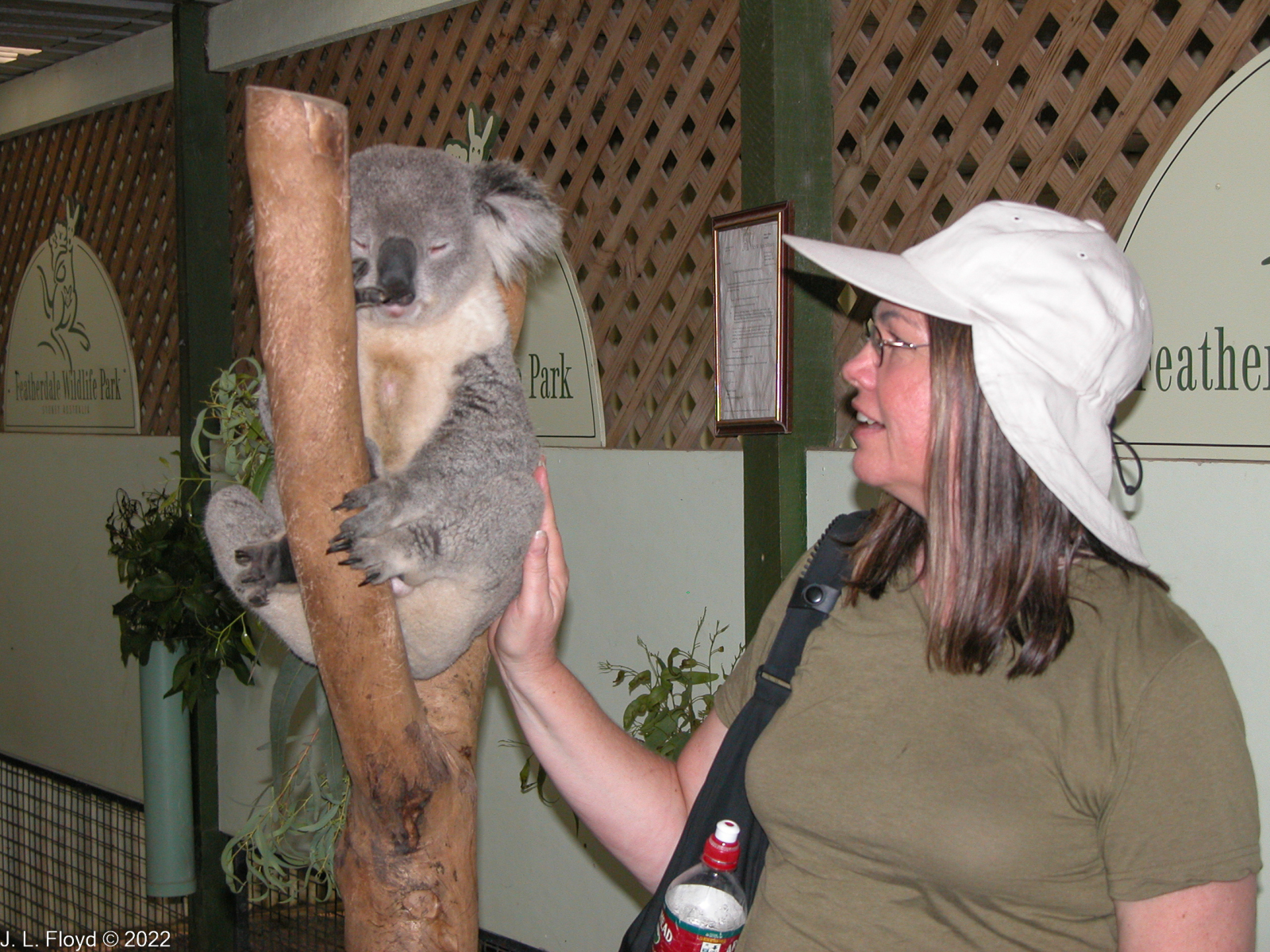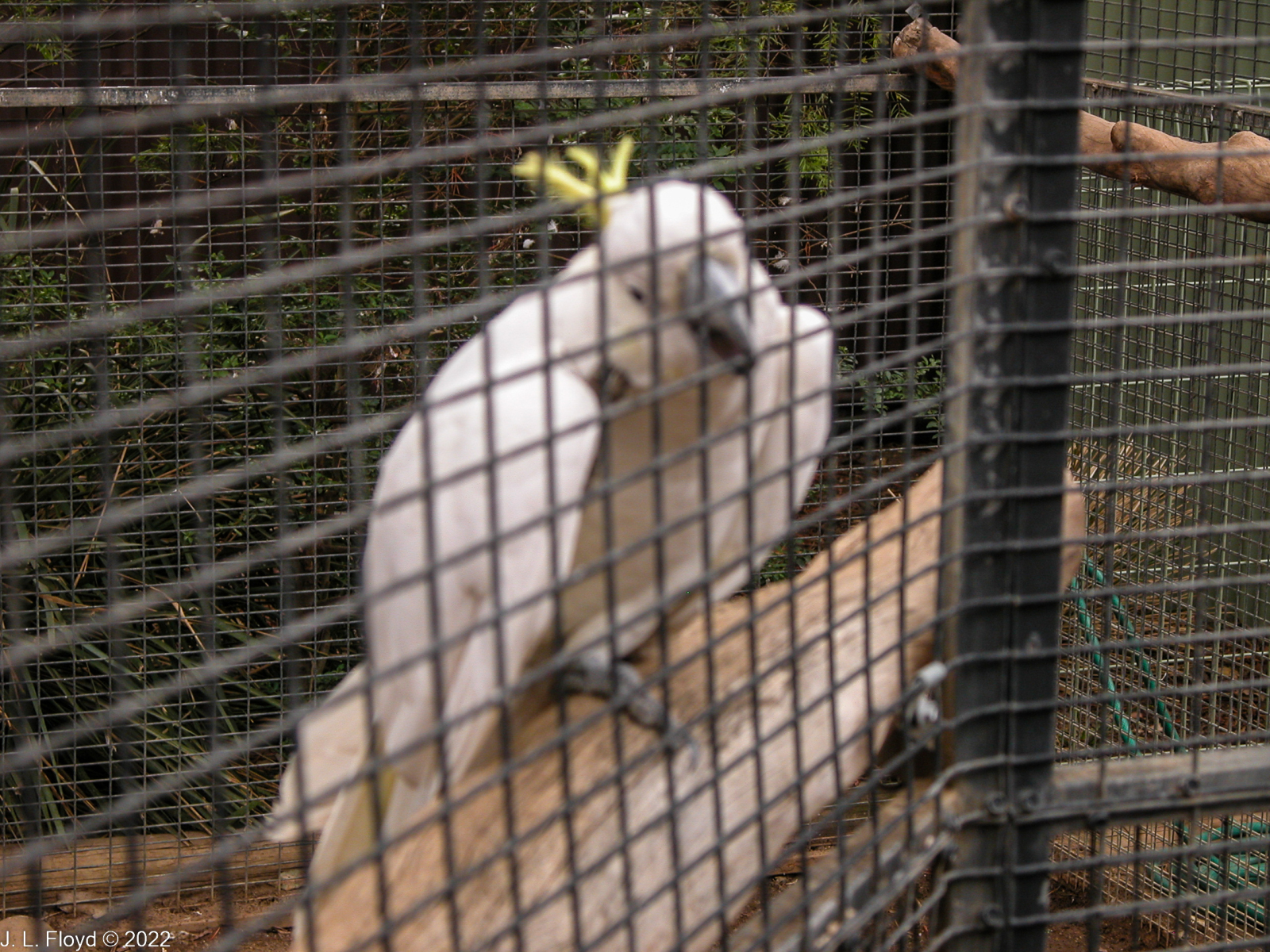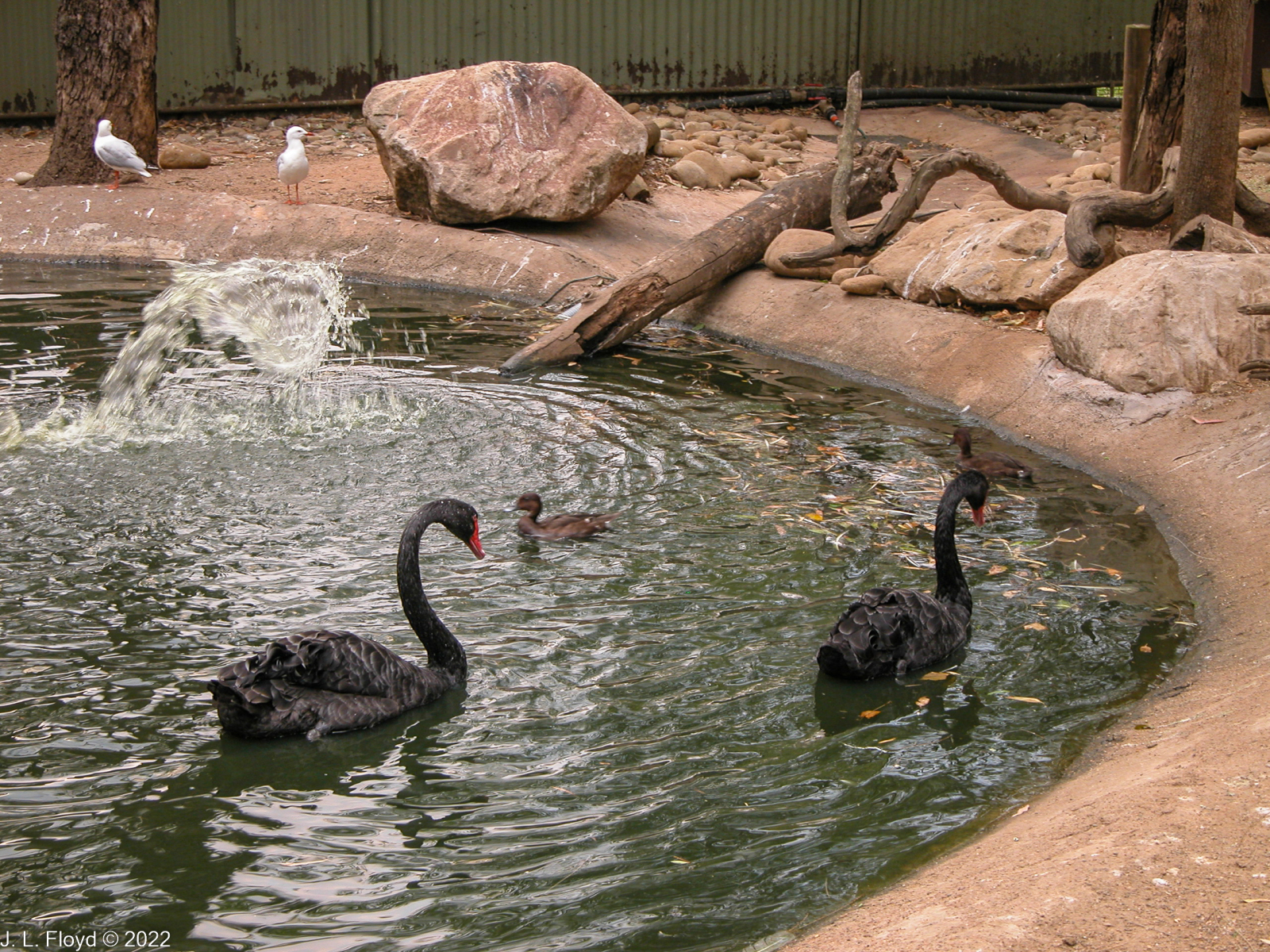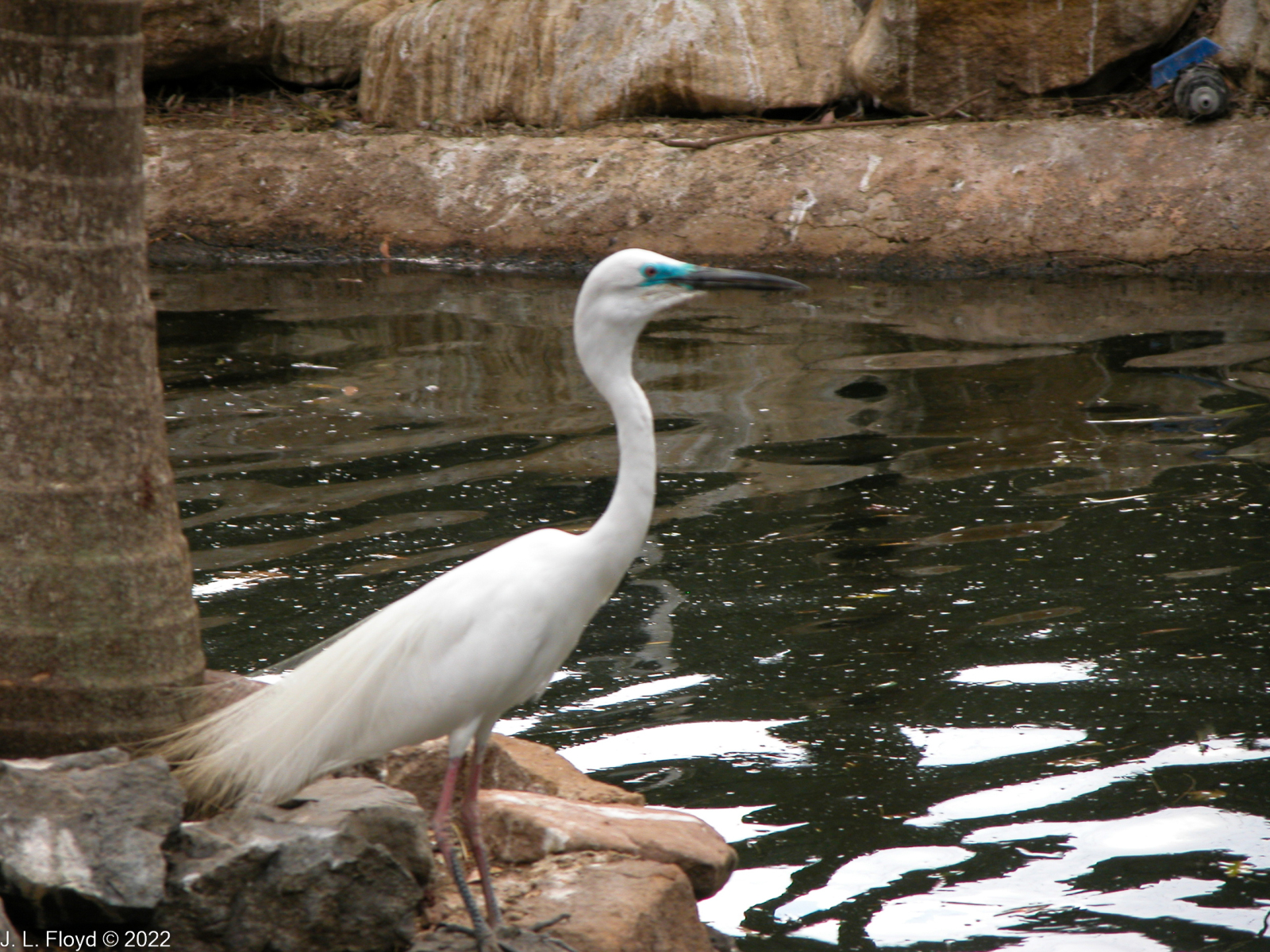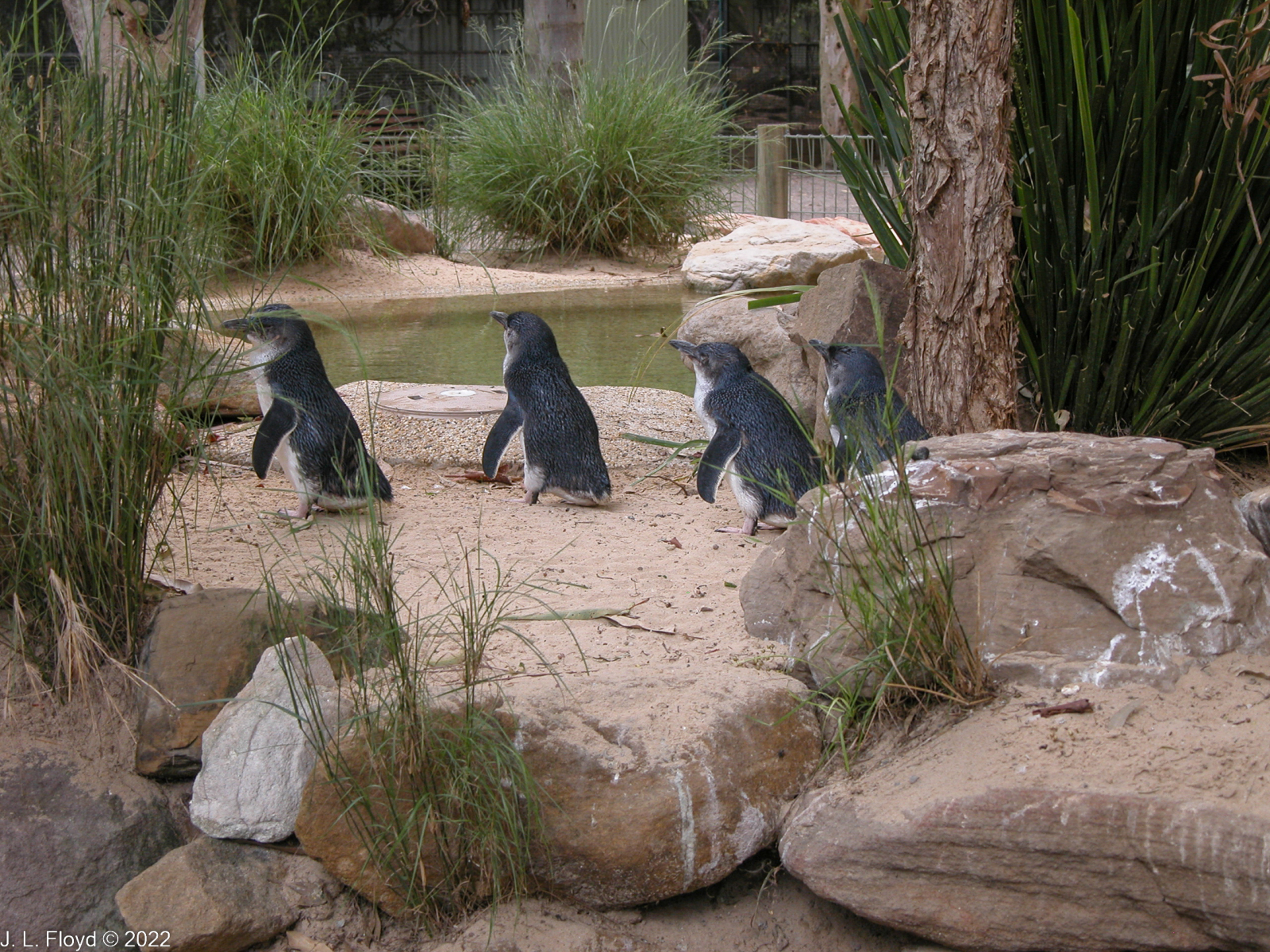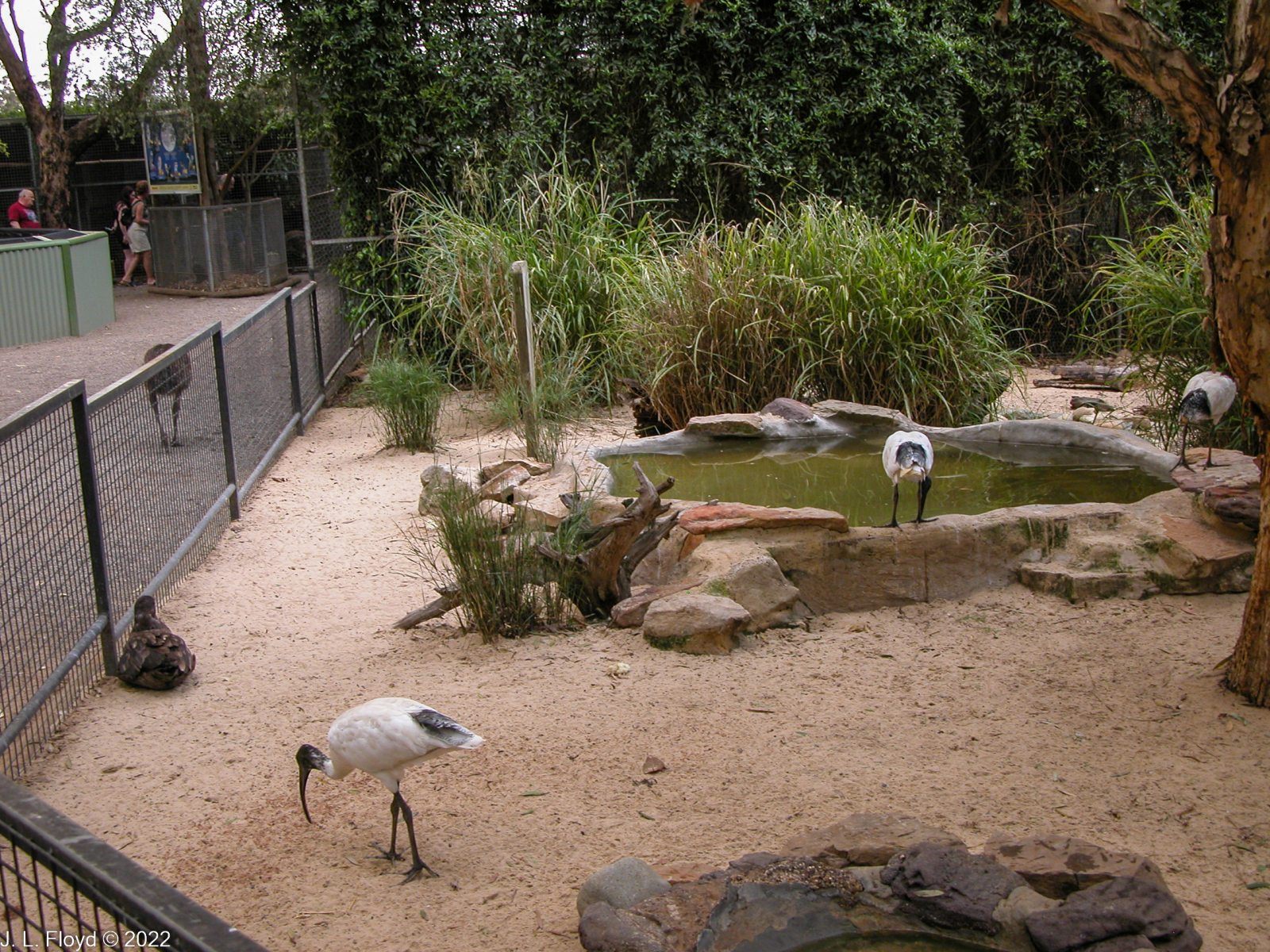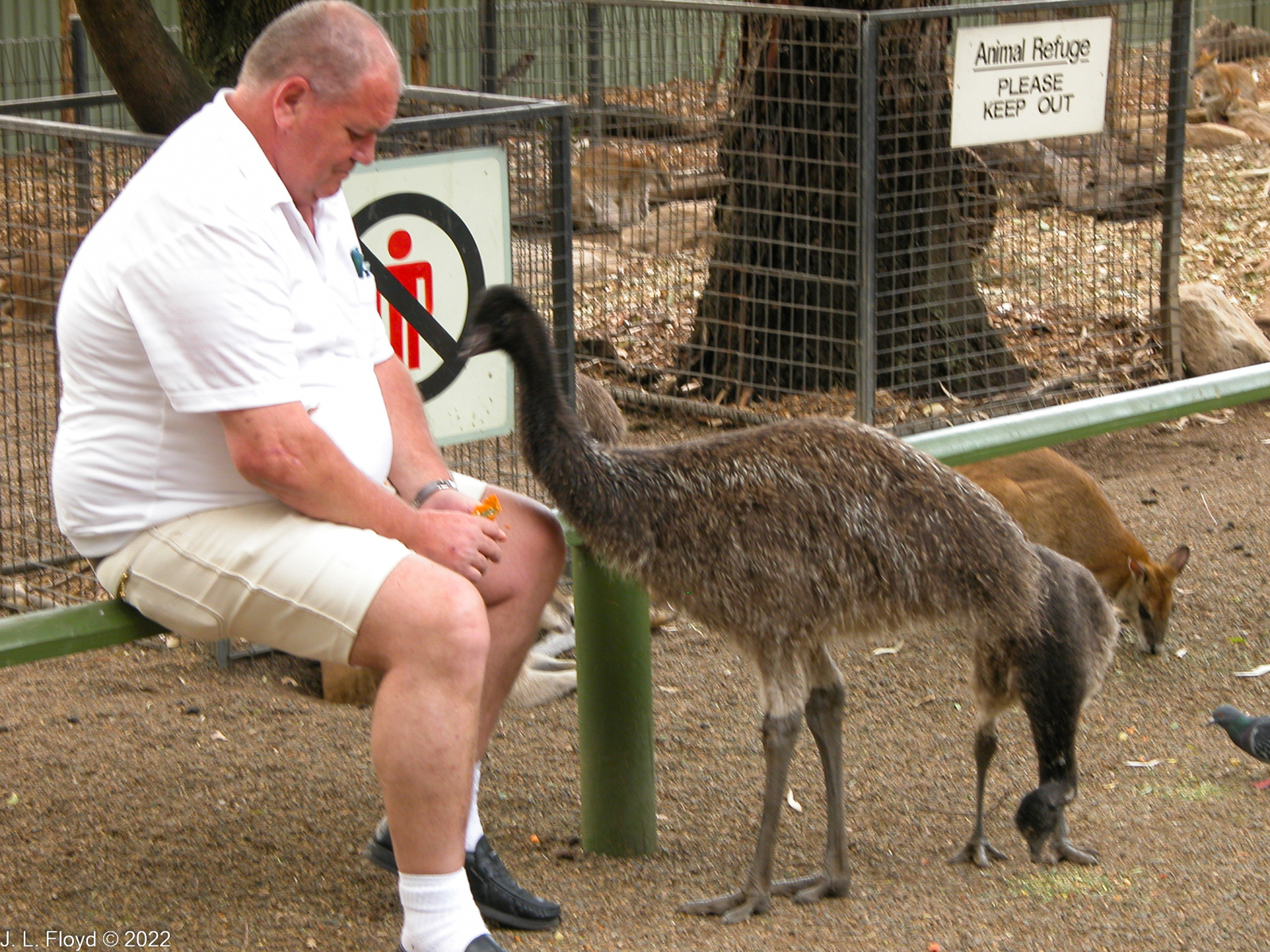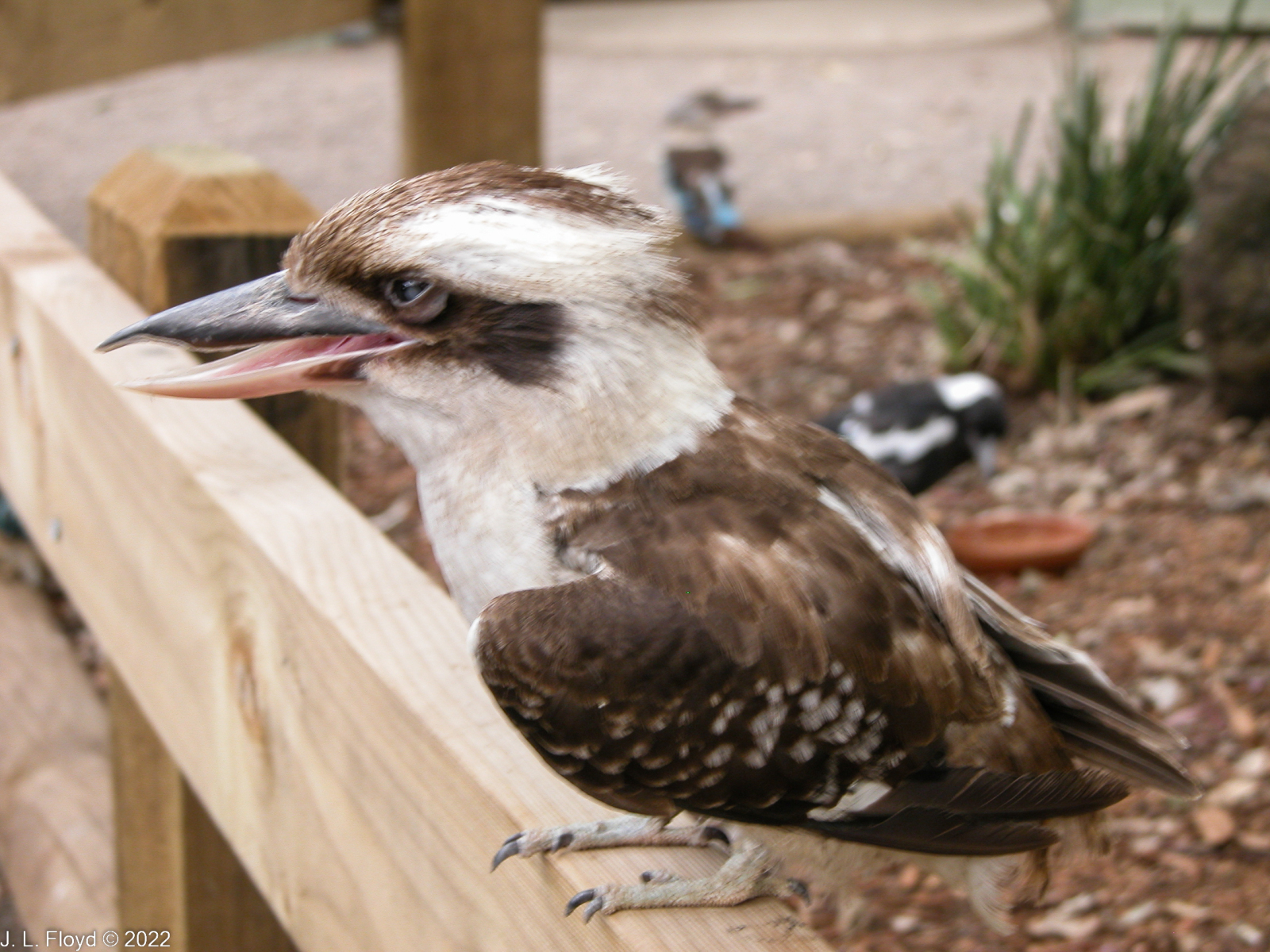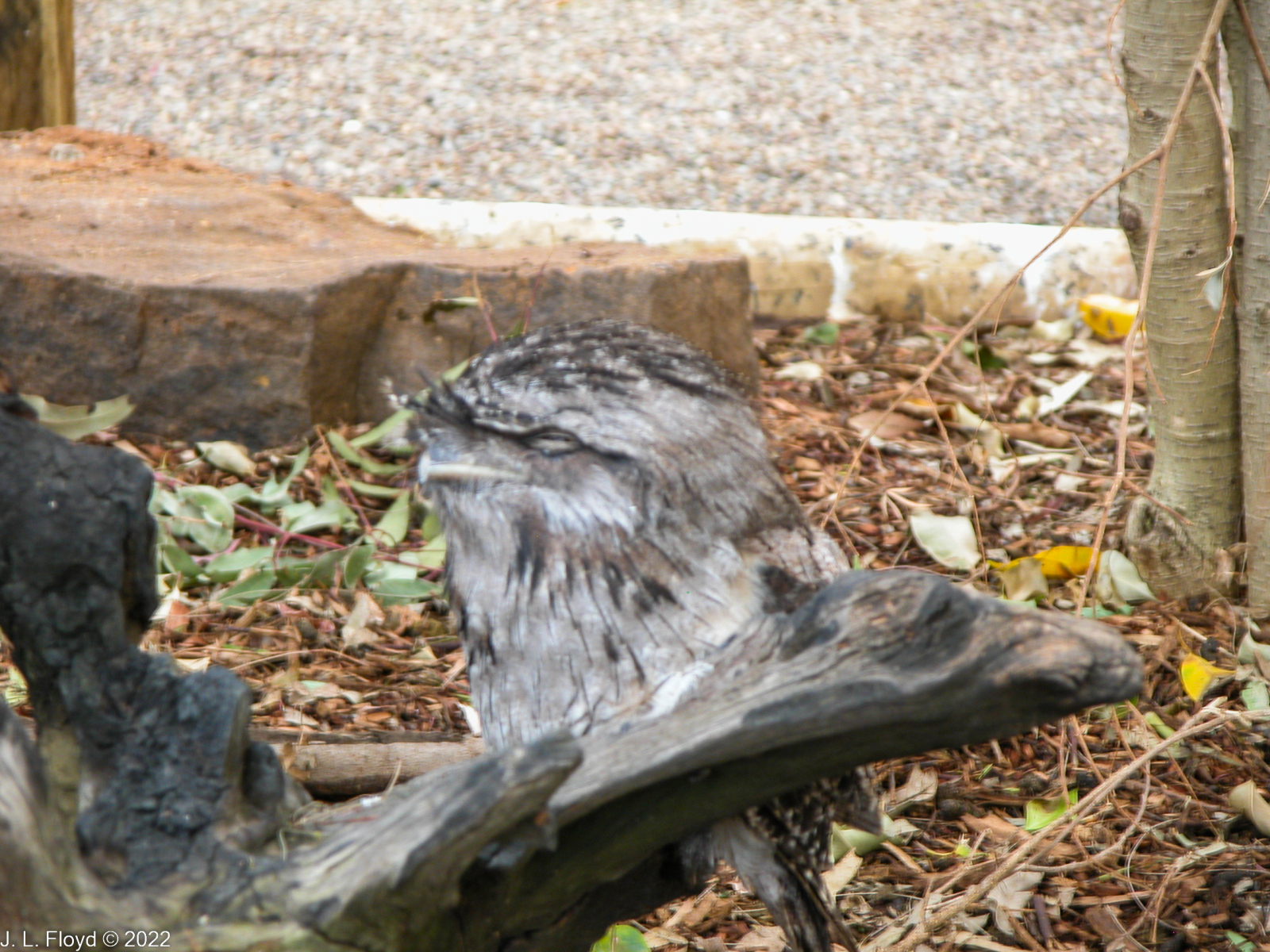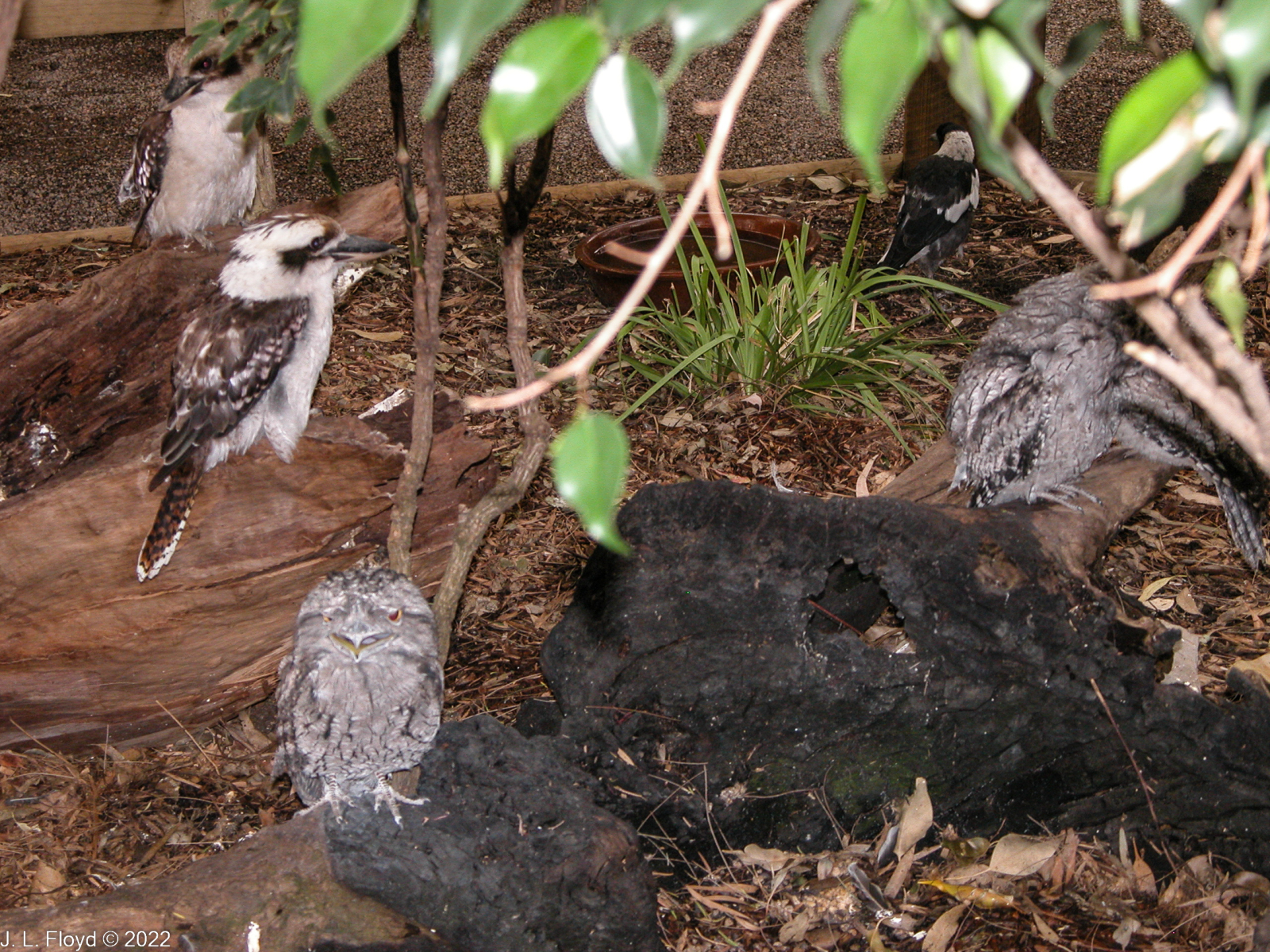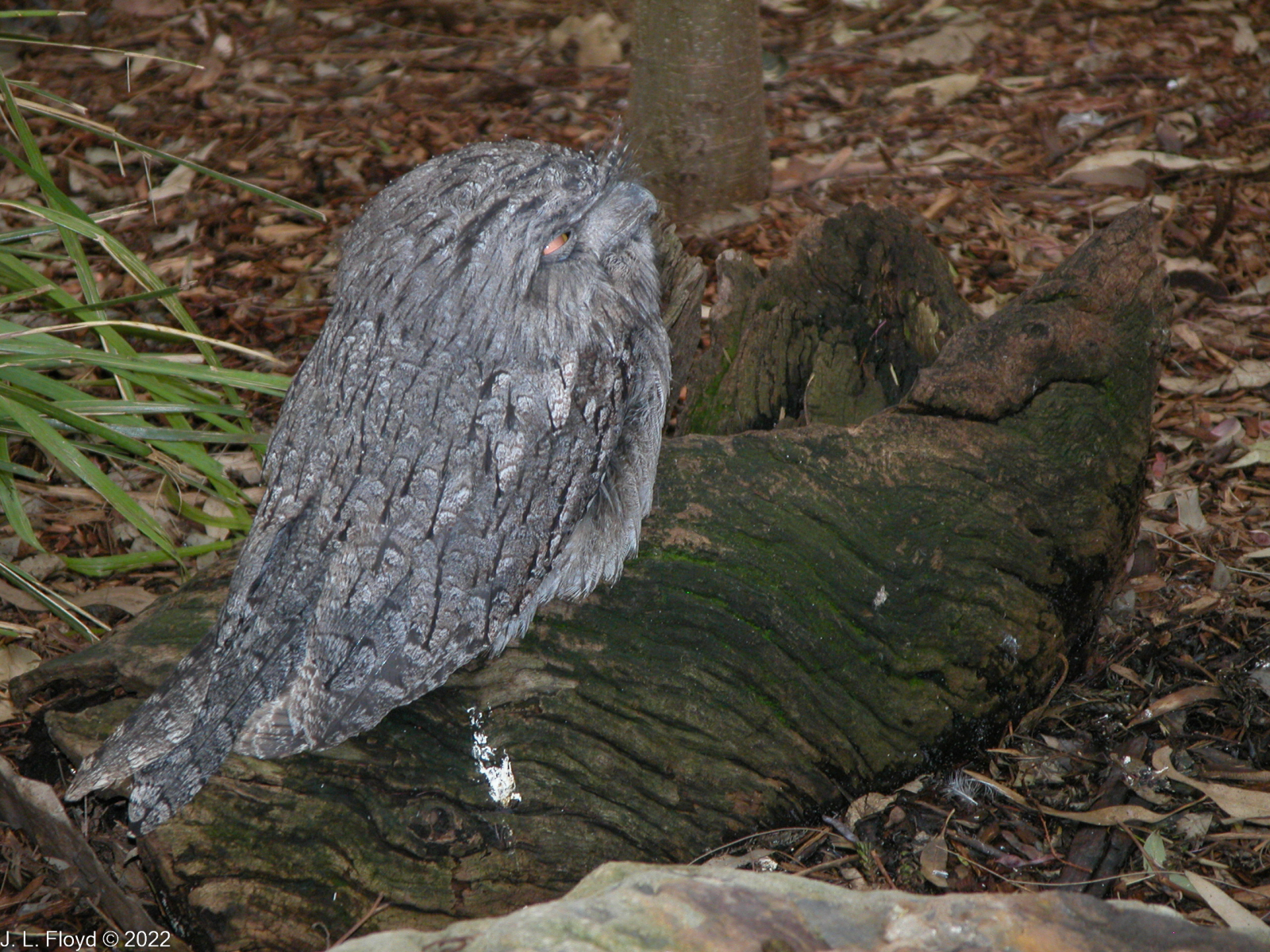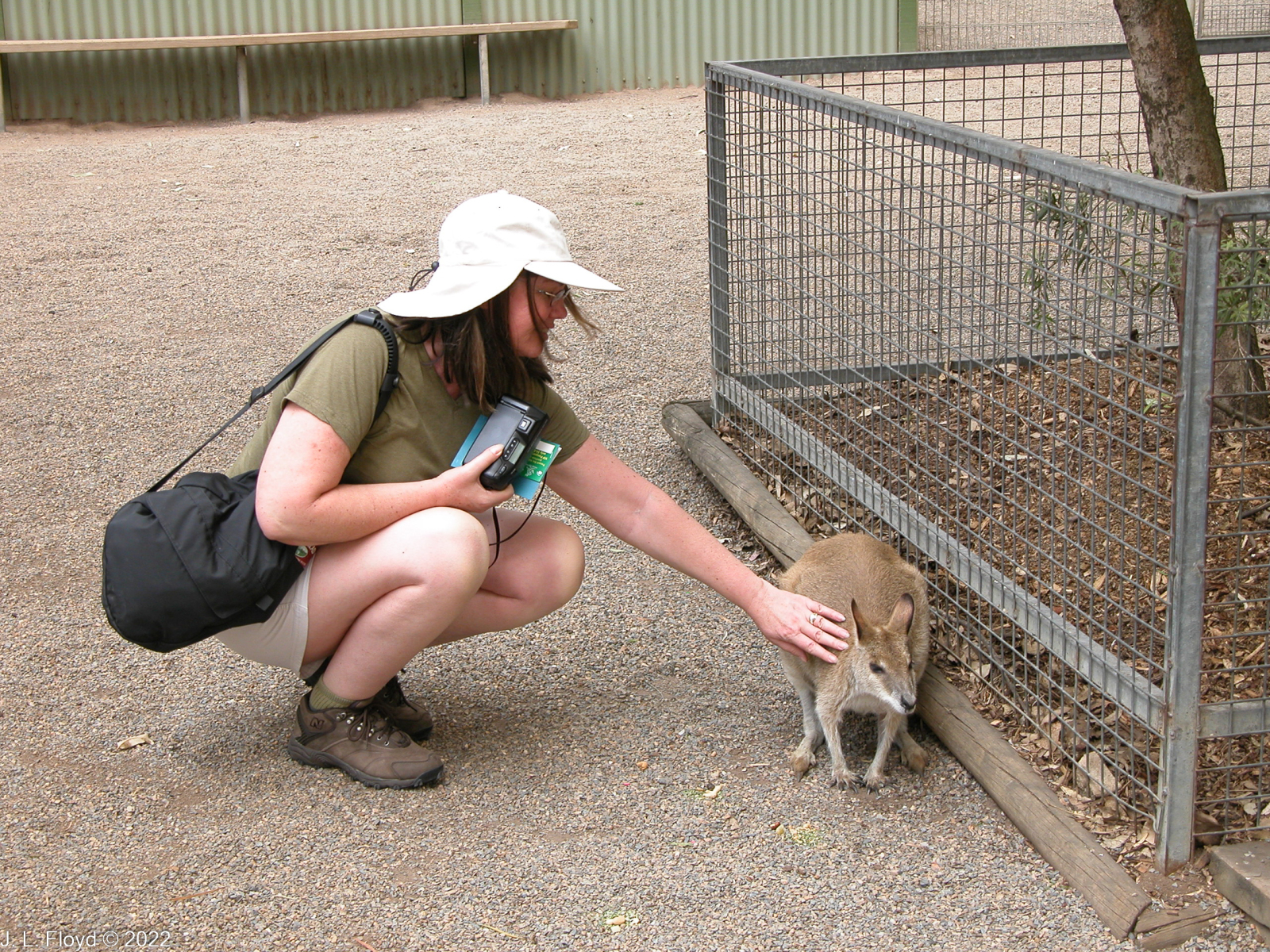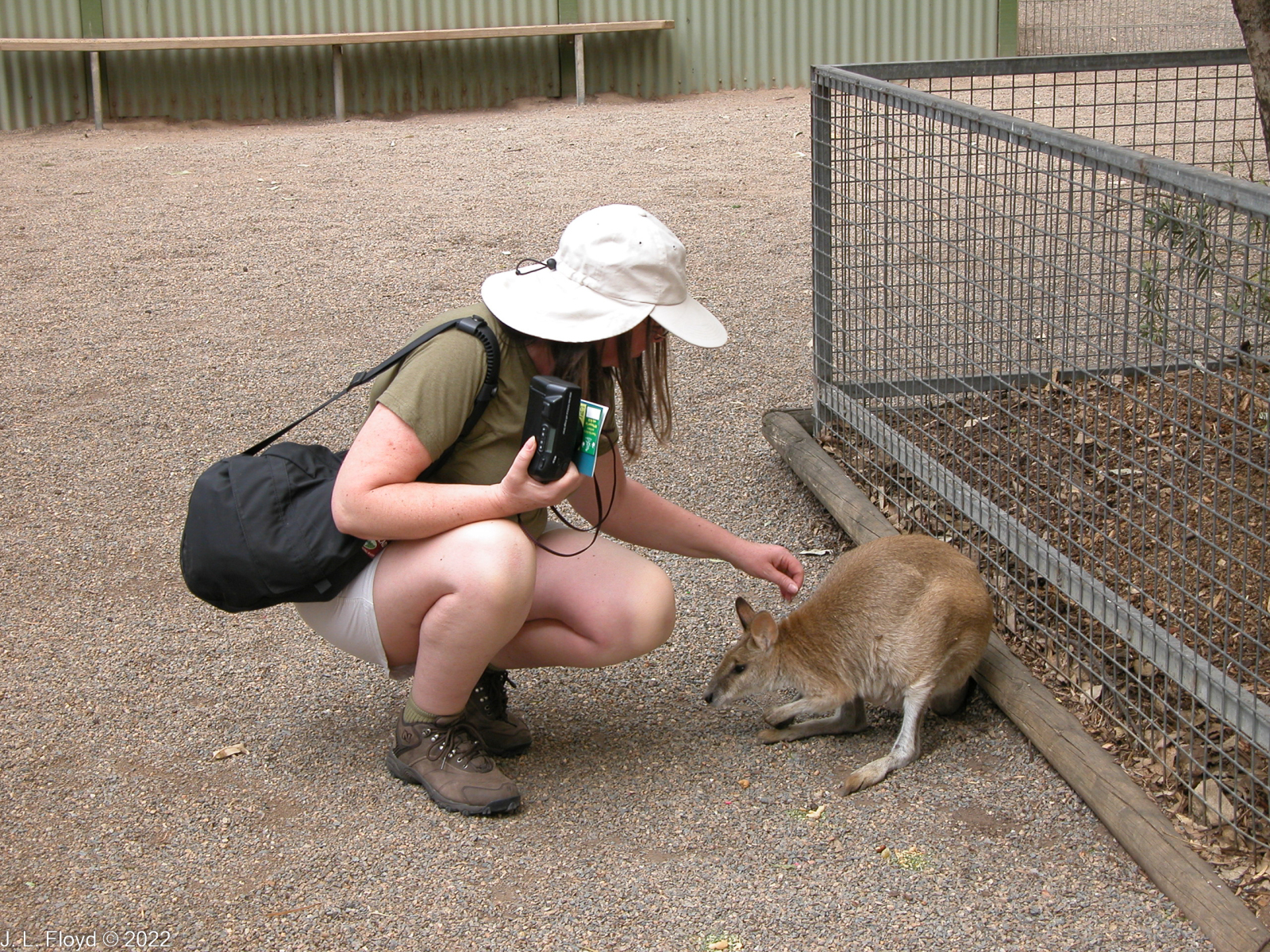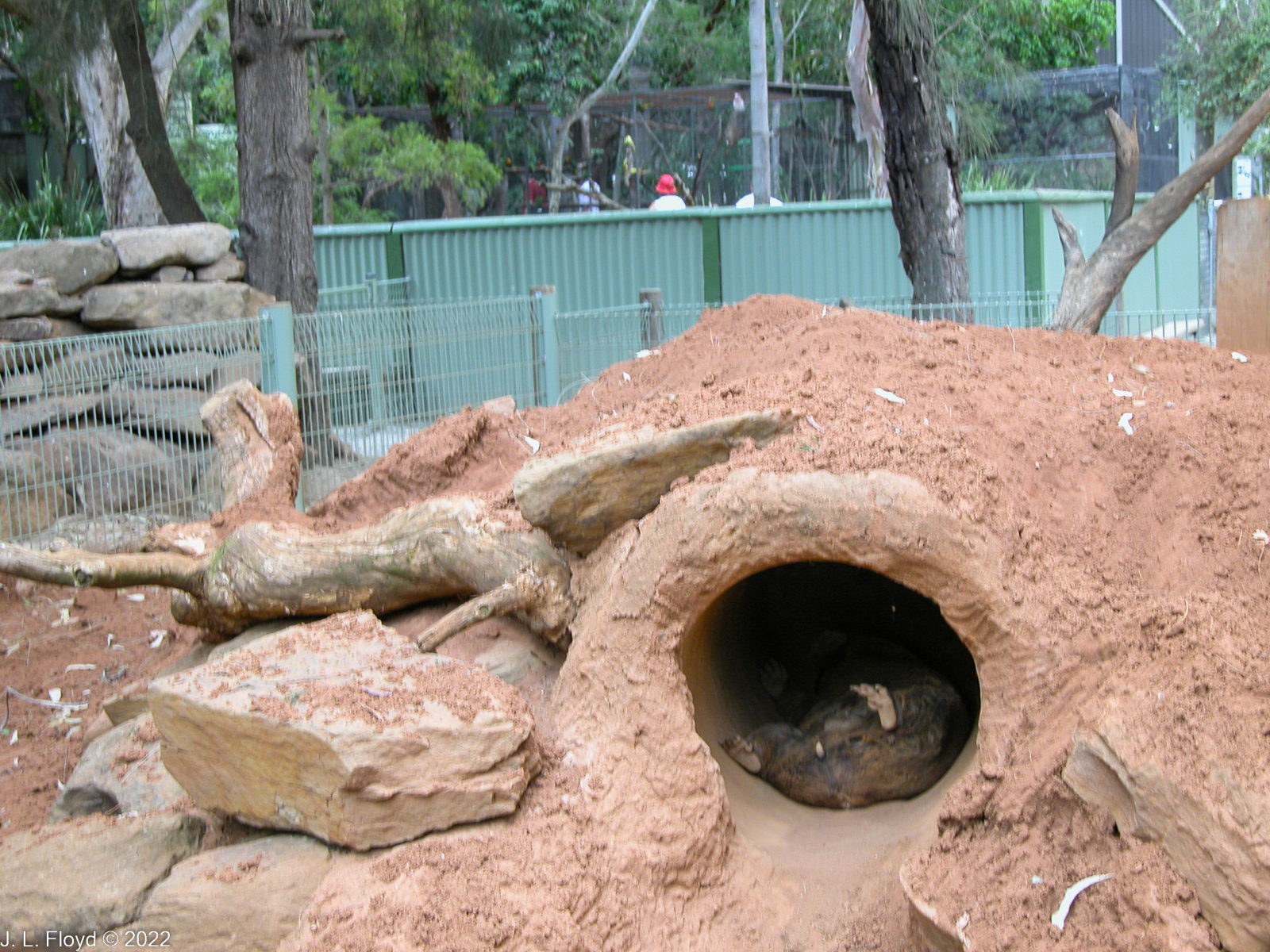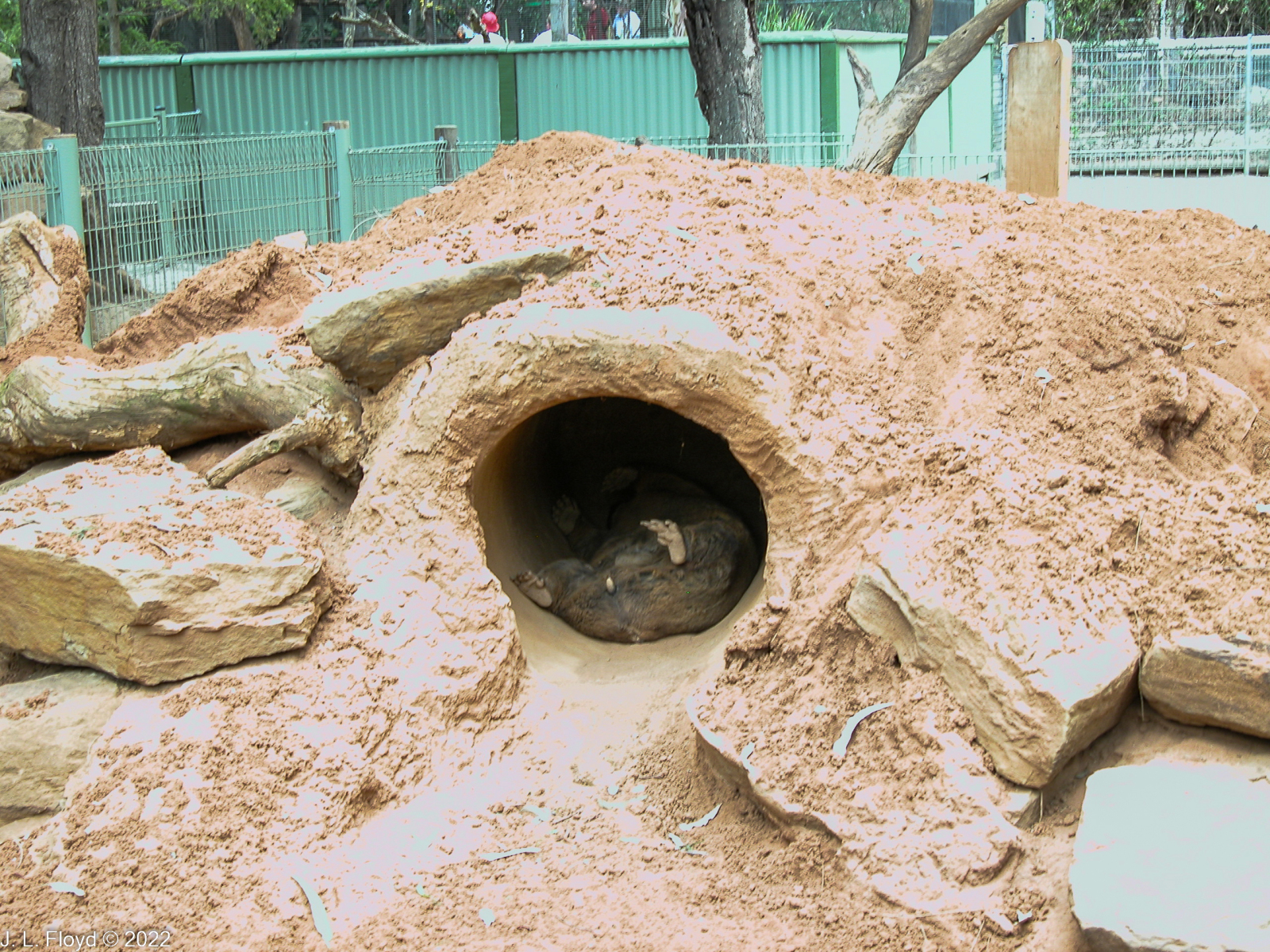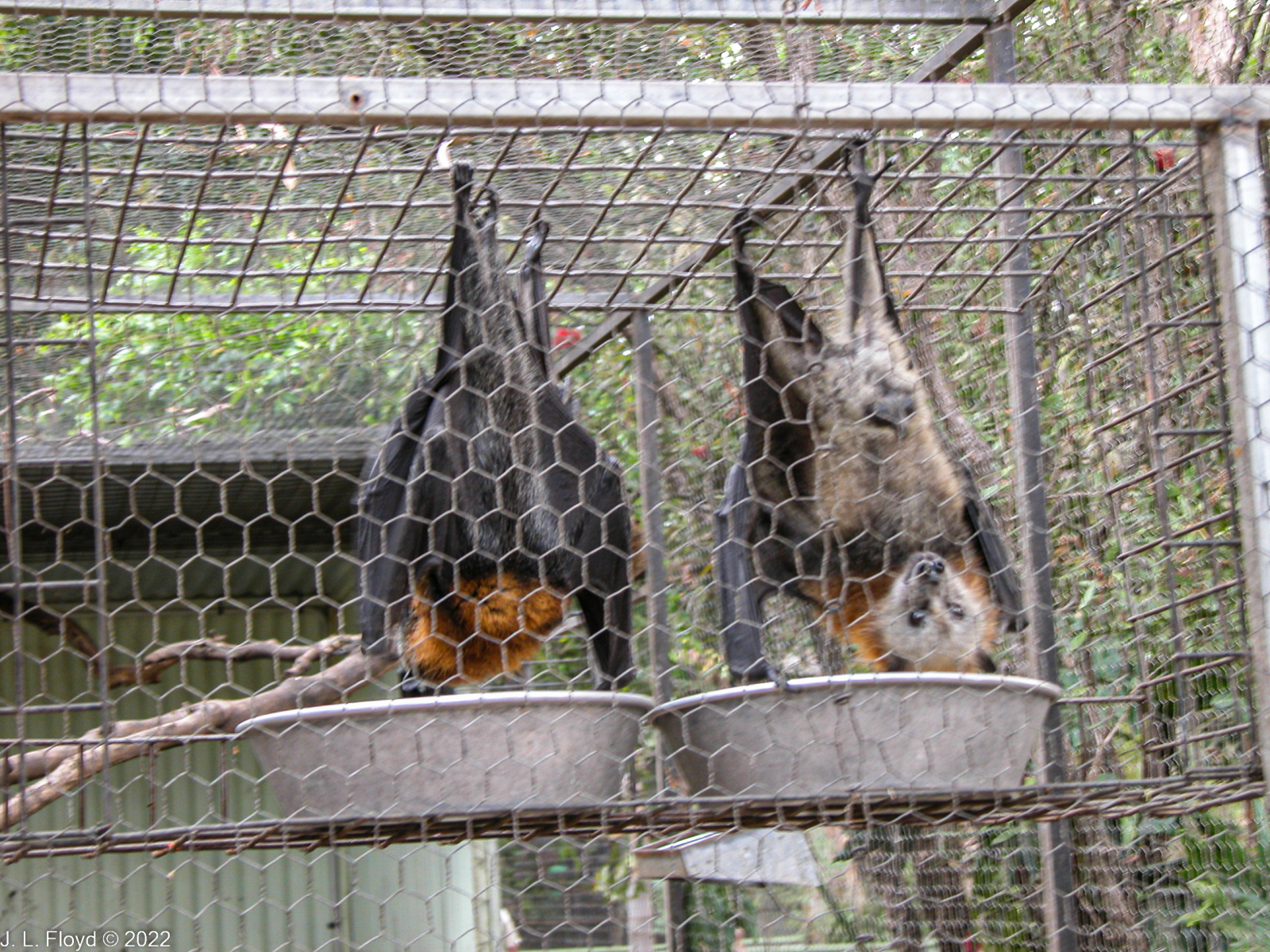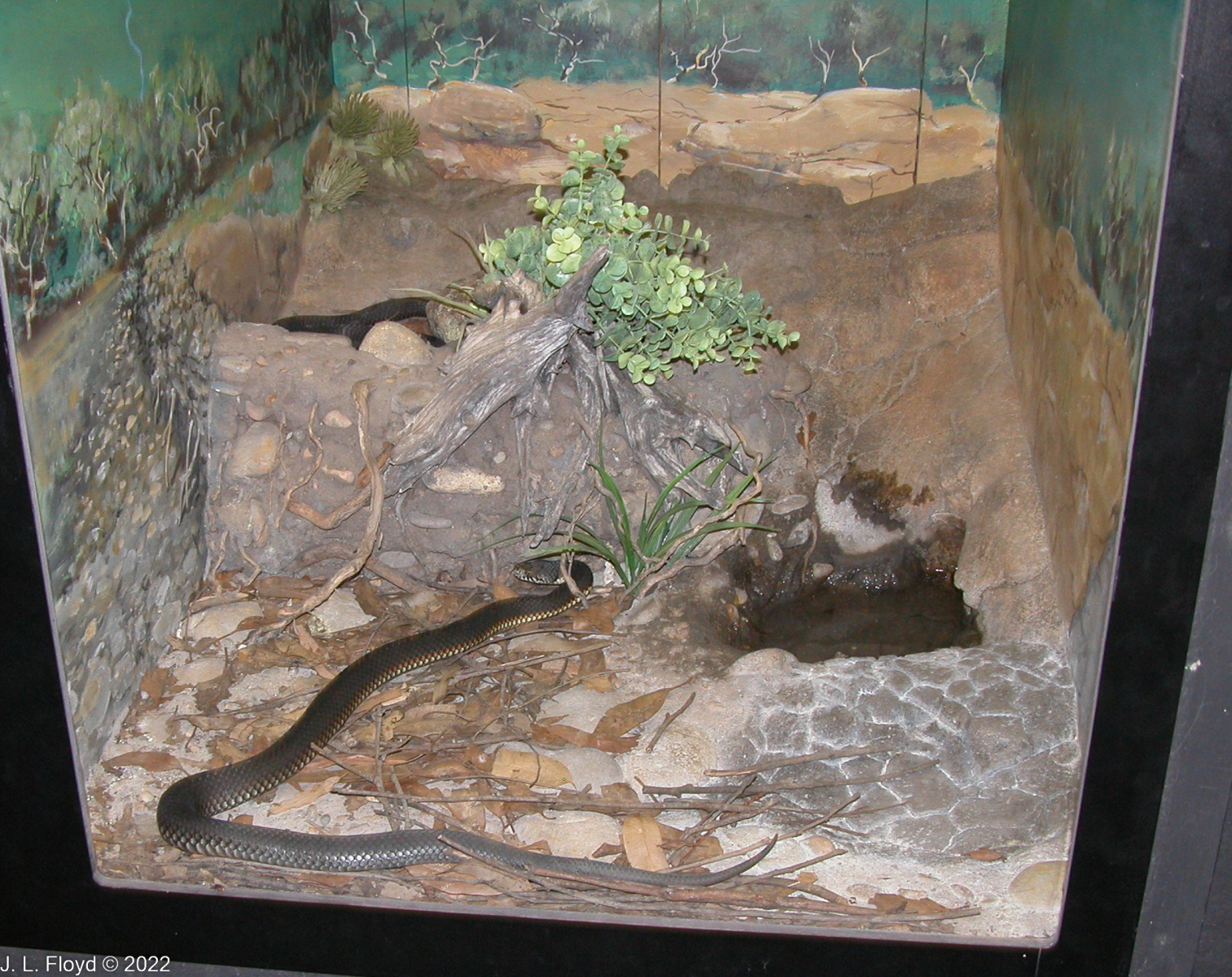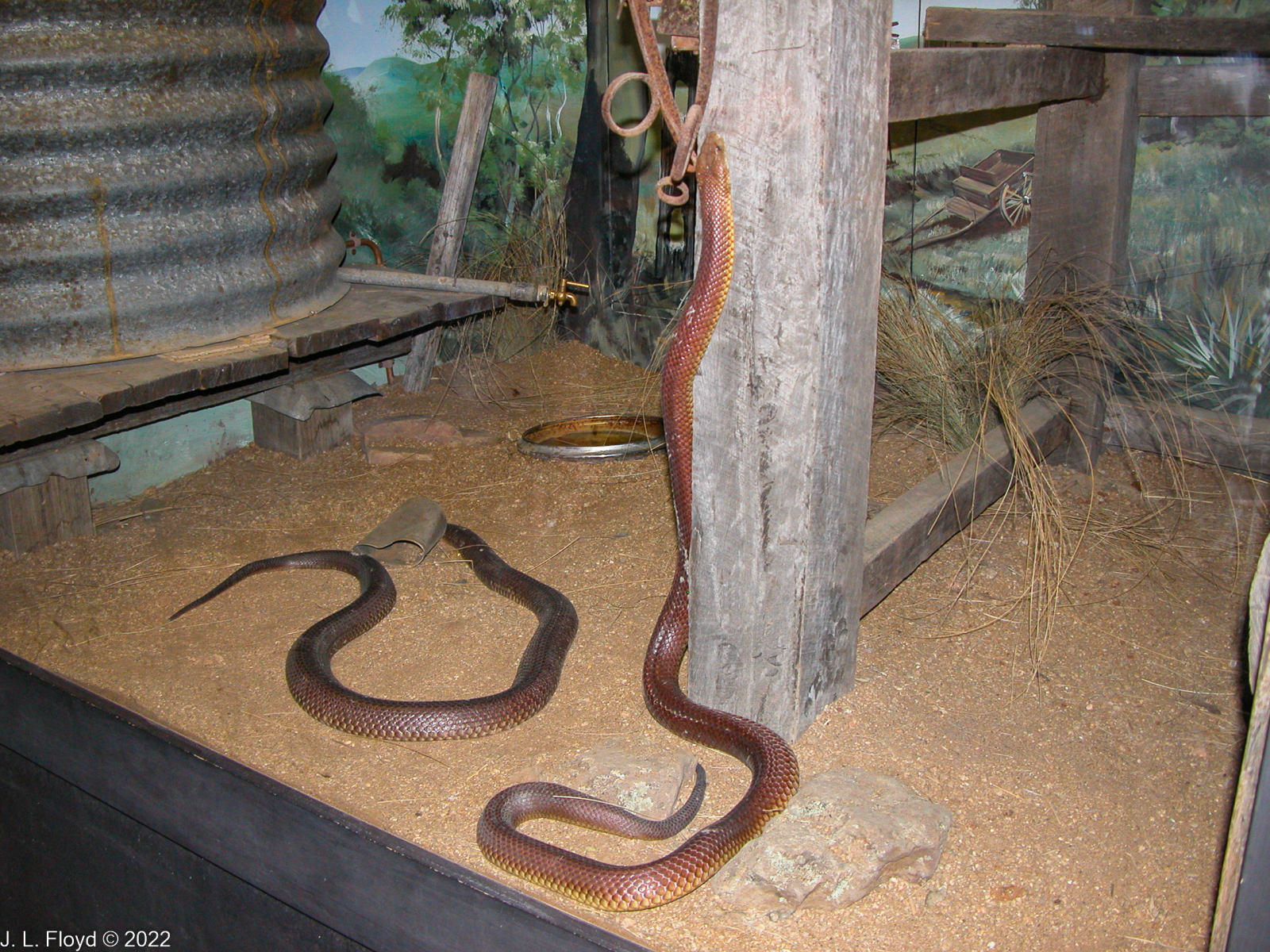On the way back from the Blue Mountains our bus took us to the Featherdale Wildlife Park in the parklands just west of Sydney. Featherdale featured a wide variety of native Australian creatures, birds as well as terrestrial animals, and of course kangaroos were well represented among them.
Like everyone else, we were captivated by the koalas, who seem to have an irresistible appeal. Also, unlike kangaroos, they are approachable; they don’t seem to mind being petted and admired, despite what the Qantas ads would have you believe.
But I think it was the birds at Featherdale that most surprised and delighted me. Australia is a bird-watcher’s paradise; their variety, colorfulness and weirdness exceeded anything I ever could imagine. And Featherdale seemed to have them all – parrots, cockatoos, swans, kookaburras, emus, penguins, herons, you name it. The onliest problem was that many of them were in cages (or locations within the cages) that were not camera-friendly, so the photos here represent only a limited selection of what we actually saw.
I have seen sulfur-crested cockatoos in the USA, where they are bred for sale as pets, but in Australia they are common in the wild. They are all white except for their yellow crest; they are extremely curious and intelligent birds and are known for being able to learn to talk and to open garbage cans in Sydney to raid them for food. But that’s just the beginning for them; they have been rapidly begun to master new tricks, such as raiding gardens and farms for produce, hijacking mobile food trucks, using microwave ovens to cook their food, etc. In fact, the one in Featherdale told me that they were making plans to reverse the extinction of the dinosaurs 65 million years ago and take back the world from humans and other mammals. (Birds are known to be descended from theropod dinosaurs.)
Black swans are also common in southeast and southwest Australia, and we had already seen a few, e.g. at Disneyland in Anaheim. But I have never seen one in flight; they are said to have white flight feathers, which should make them a spectacular sight on the wing. The pair in Featherdale had cygnets – baby swans – with them.
The Eastern Great Egret was a beautiful sight: all white except for its black bill and green face mask. I later found out that ordinarily it is entirely white with a yellow beak, and the colors we saw appear only in breeding season.
We also saw some cute little penguins, and it turned out that it’s not only a description but also the species name. There are two species of these, one native to Australia, and the other to New Zealand. (The Australian variety has also invaded New Zealand.) The Little Penguins in Australia live on the southern coasts and offshore islands.
We had been introduced to the Australian White Ibis in Hyde Park in Sydney, so we were not surprised to see them in Featherdale. They are widespread over much of Australia, but it turns out that they have only invaded urban areas of Australia since the 1970s. It seems they have developed a taste for human food scraps, which they enjoy in addition to their natural diet of various invertebrates – they especially favor clams and mussels, which they dig out with their long bills. I don’t doubt that they have now joined forces with the cockatoos in their scheme to displace humans.
There was no end to the delightful and sometimes bizarre avians at Featherdale. We came across an emu who was investigating a middle-aged gentleman seated on a railing; he claimed to be conducting a scientific study of humans. Next we encountered a laughing kookaburra, another iconic Australian bird, who thought we were hilarious. But in the same pen with the kookaburras was the most bizarre and ridiculous bird I have ever seen, which was billed as a Tawny Frogmouth. It somewhat resembled an owl, and we thought at first that it was an owl, but we were informed that it is related not to owls but to swifts and hummingbirds, which I find quite difficult to believe. Like the owl, the frogmouth is a nocturnal feeder, but unlike the owl it is a weak flyer, so it depends primarily on camouflage for success as a hunter, as well as its broad flat hooked bill, which it uses to capture insects; frogmouths also like small vertebrates such as mice and frogs.
Getting back to the mammals, Sandie found a cute little marsupial in one of the open gardens – I’m not sure whether it was a baby kangaroo or a wallaby – and quickly made friends with it.
Next we came across a den with – or so it appeared at first – nobody home. But then in the darkness we could make out the hindquarters of a creature that turned out to be a sleeping Tasmanian devil. I had never seen one of these outside of a Looney Tunes cartoon, so I really wanted to know what they look like; but try as I might, I couldn’t coax the creature to come out of its den, or even wake it up. I had to look up the species on Wikipedia to find out what it looks like. Turns out it looks (and behaves) somewhat like a cross between a dog and a wolverine. According to Wikipedia, “It is characterised by its stocky and muscular build, black fur, pungent odour, extremely loud and disturbing screech, keen sense of smell, and ferocity when feeding.” It is carnivorous, both a hunter and a scavenger, and has the strongest bite for its body mass of any extant land animal.
A couple of rather large bats hanging upside-down in their cage caught my attention. I expected to find out that they were vampires, but it turns out that they eat pollen, nectar and fruit, and moreover are key pollinators. The grey-headed flying fox, as the species is known, is the largest bat in Australia and lives mainly in the southern and eastern regions of the continent. It does not echolocate but rather relies on sight and smell to find its food; the expression “blind as a bat” does not apply in this case.
And finally there were the serpents. I find snakes to be both fascinating and repellent. Australia is known for its venomous snakes, of which there are many varieties, most of them quite deadly. The inland taipan snake is supposed to have the most toxic venom in the world. However, we were informed that once bitten by an Australian snake, if you can get the antitoxin in time, you will recover more quickly and completely than if you were bitten by a cobra or a rattlesnake, whose venom supposedly has more long-lasting complications. I resolved not to test this assertion. The Australian snake with the second most toxic venom in the world is the Eastern Brown, a fast and agile snake which is responsible for about 60% of human snake-bite deaths in Australia. At Featherdale we saw tiger snakes, eastern browns and Australian copperheads; I’m not sure exactly which ones appear in the following photographs.
I can’t finish this post without bringing up the 1962 Rolf Harris song “Tie Me Kangaroo Down, Sport”:
There’s an old Australian stockman lying, dying
And he gets himself up onto one elbow and he turns to his mates
Who are all gathered around and he says
Watch me wallabies feed, mate
Watch me wallabies feed
They’re a dangerous breed, mate
So watch me wallabies feed
Altogether now!
Chorus (repeats after each verse):
Tie me kangaroo down, sport
Tie me kangaroo down
Tie me kangaroo down, sport
Tie me kangaroo down
Keep me cockatoo cool, Curl
Keep me cockatoo cool
Ah, don’t go acting the fool, Curl
Just keep me cockatoo cool
Altogether now!
…
Take me koala back, Jack
Take me koala back
He lives somewhere out on the track, Mac
So take me koala back
Altogether now!
…
And mind me platypus duck, Bill
Mind me platypus duck
Ah, don’t let ‘im go running amok, Bill
Just mind me platypus duck
Altogether now!
…
Let me Emus go loose, Bruce
Let me Emus go loose
They’re of no further use, Bruce
Let me Emus go loose
Altogether now!
…
Play your didgeridoo, Blue
Play your didgeridoo
Keep playin’ ’til I shoot through, Blue
Play your didgeridoo
Altogether now!
…
Tan me hide when I’m dead, Fred
Tan me hide when I’m dead
So we tanned his hide when he died, Clyde
And that’s it hangin’ on the shed!
Altogether now!
…
OK, I have to admit that I put in my own version of one of those verses. Originally it was “Let me Abos go loose, Bruce,” and that was the way I first heard the song on the jukebox when I was working in the Blue Door Cafe in Long Beach in 1963, but that verse was later deleted because the reference to “Abos” – aborigines – was considered racist. I don’t understand why they didn’t just replace “Abos” by “emus,” which has the same number of syllables and is an Australian animal, so I did it myself. So far, the emus haven’t objected to that.
